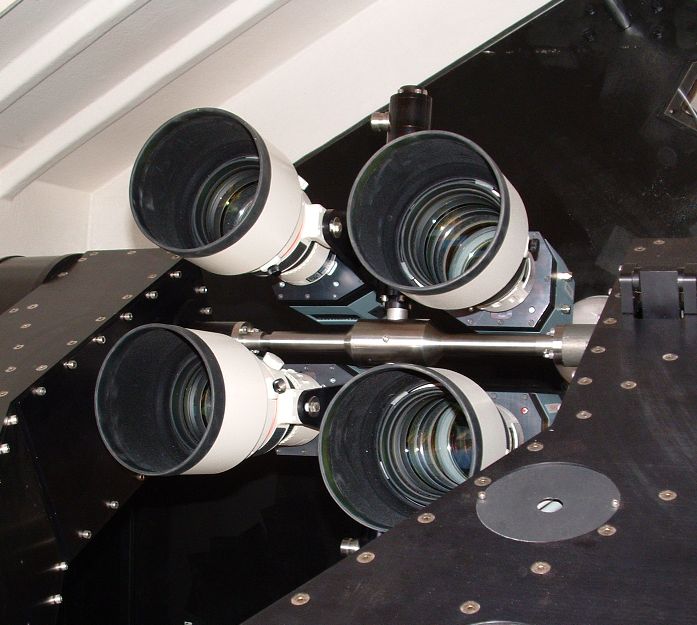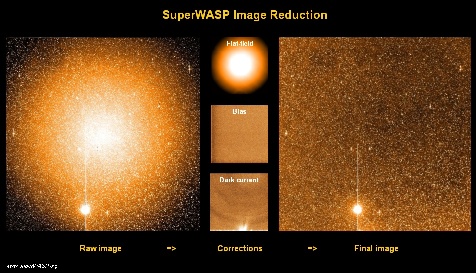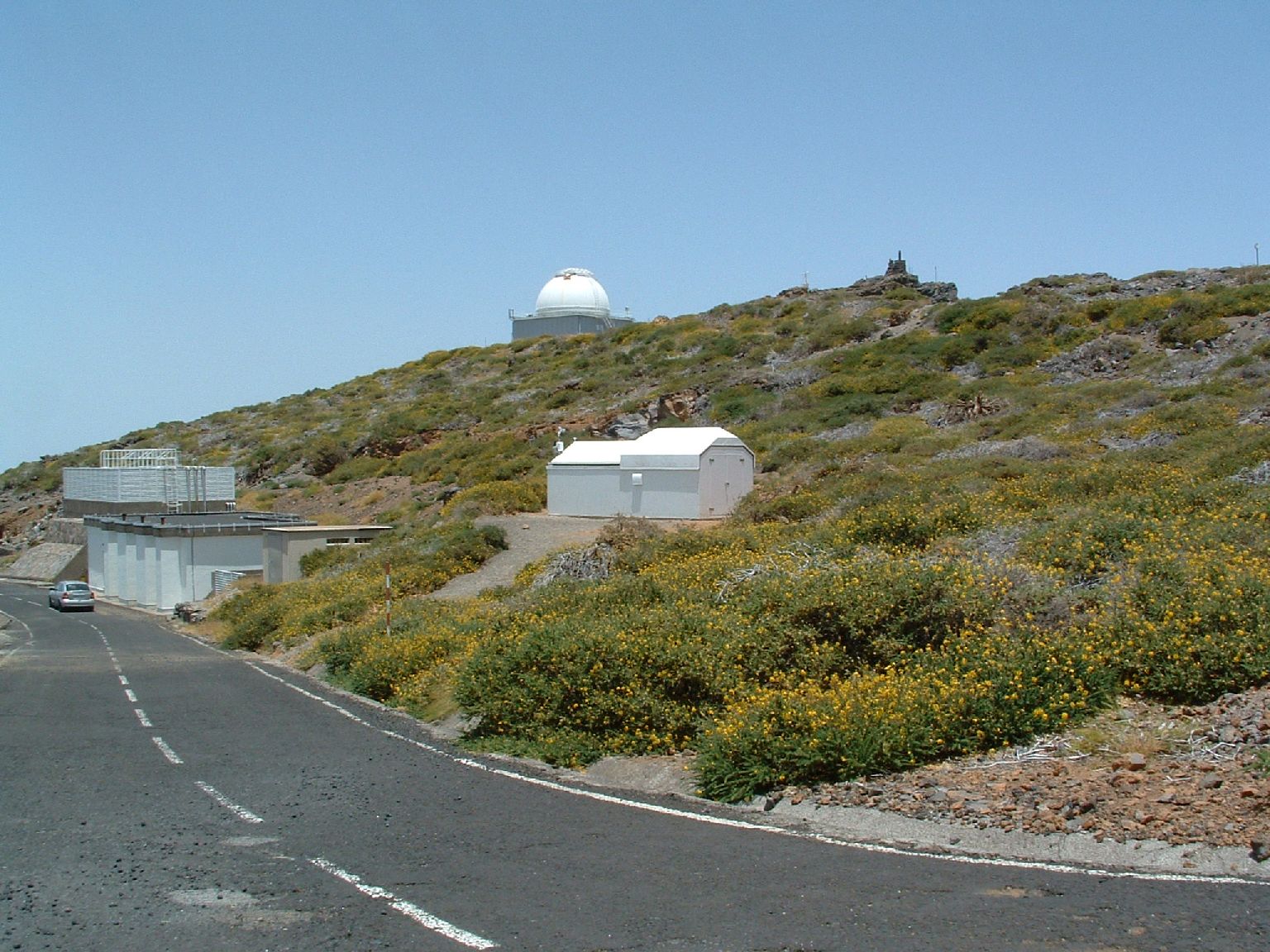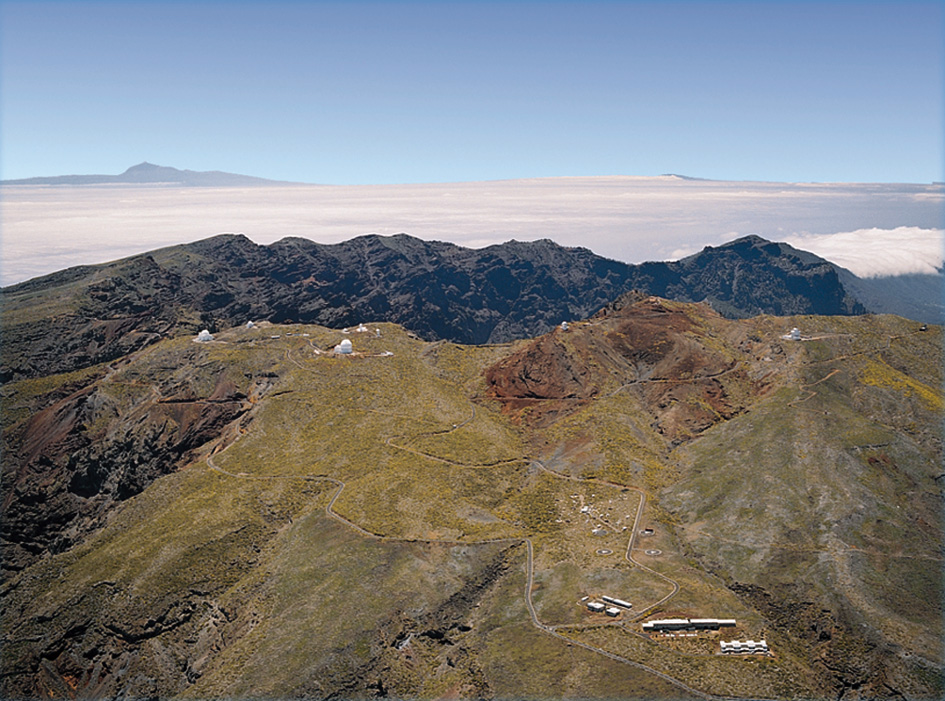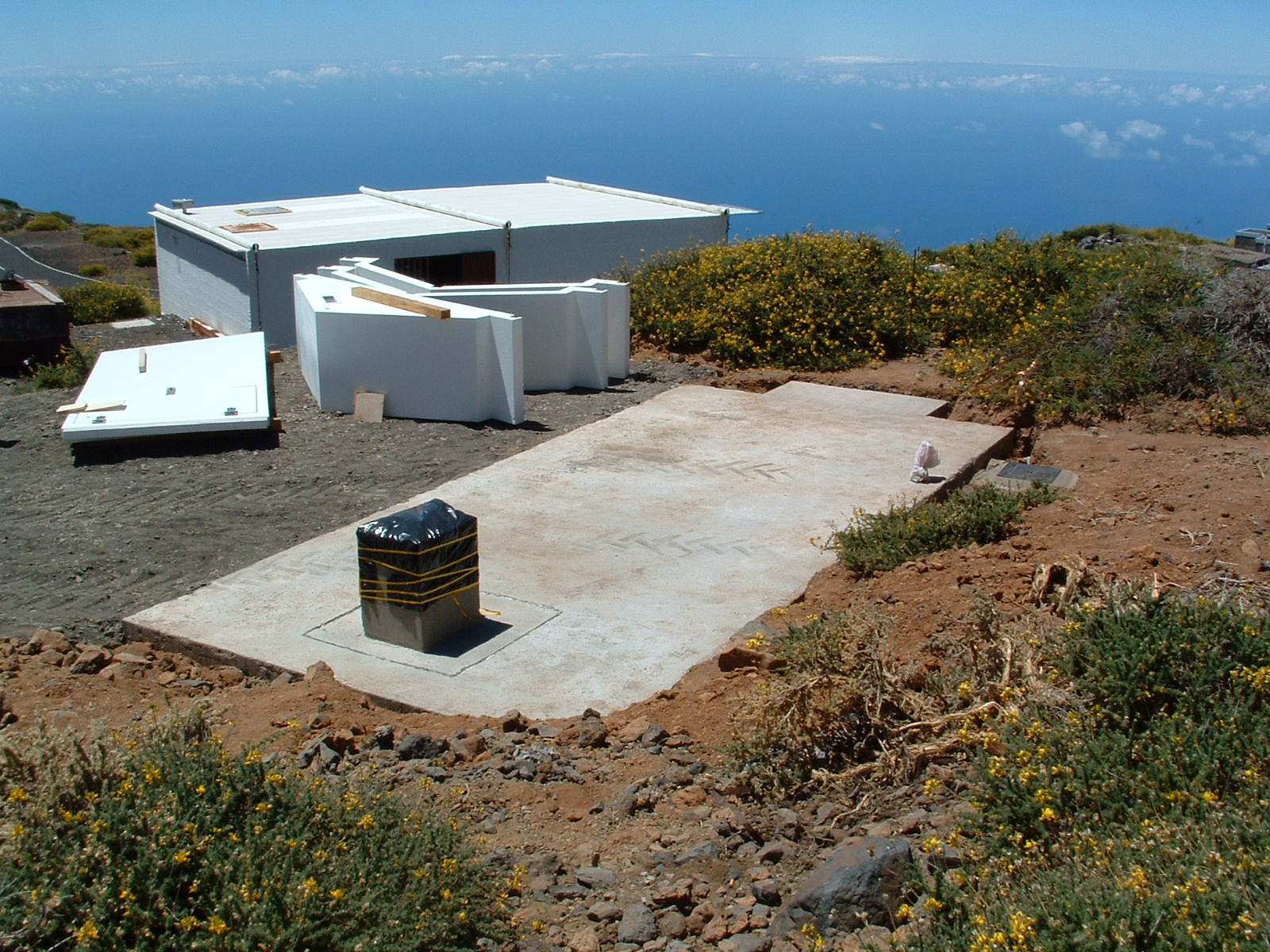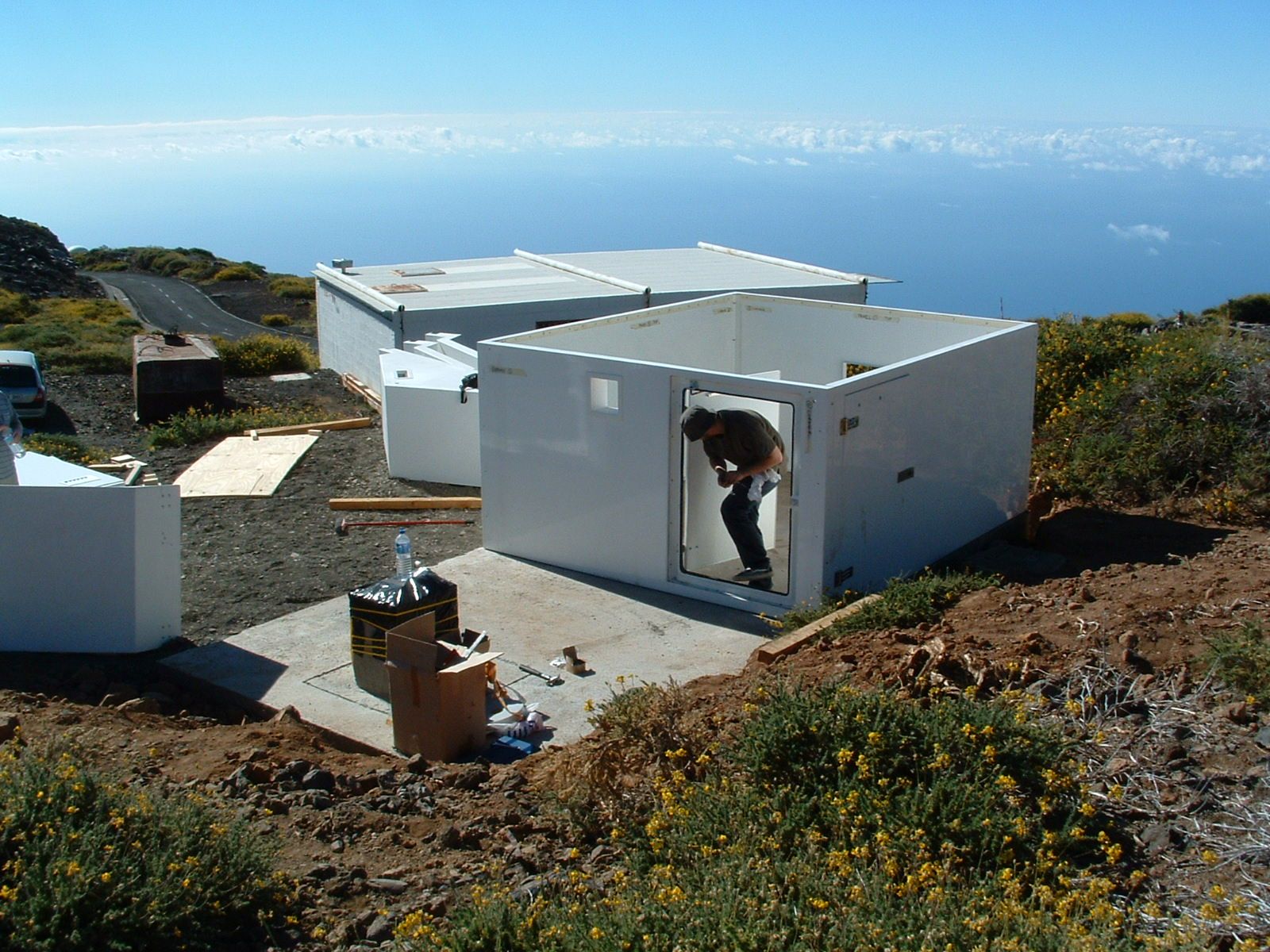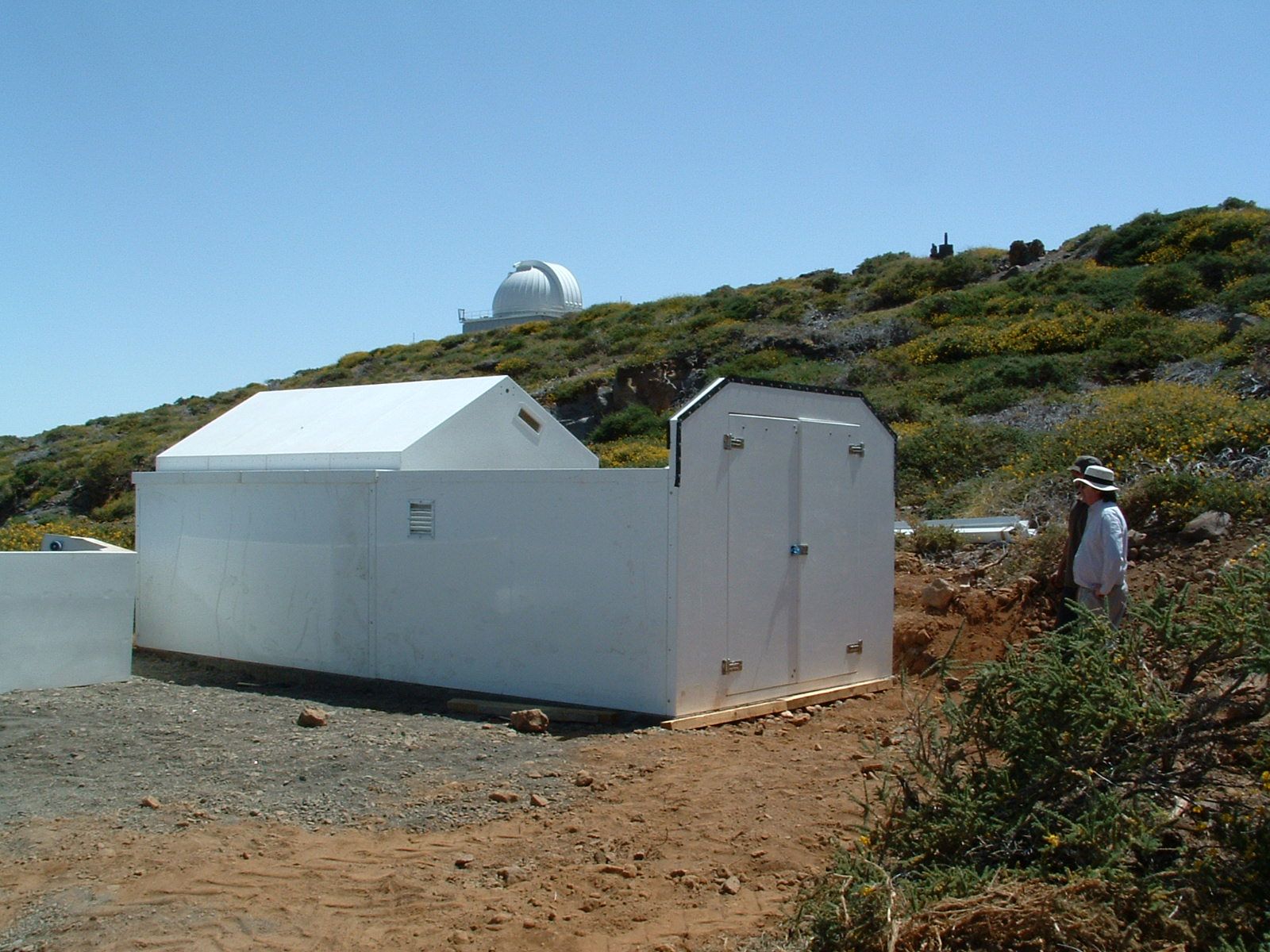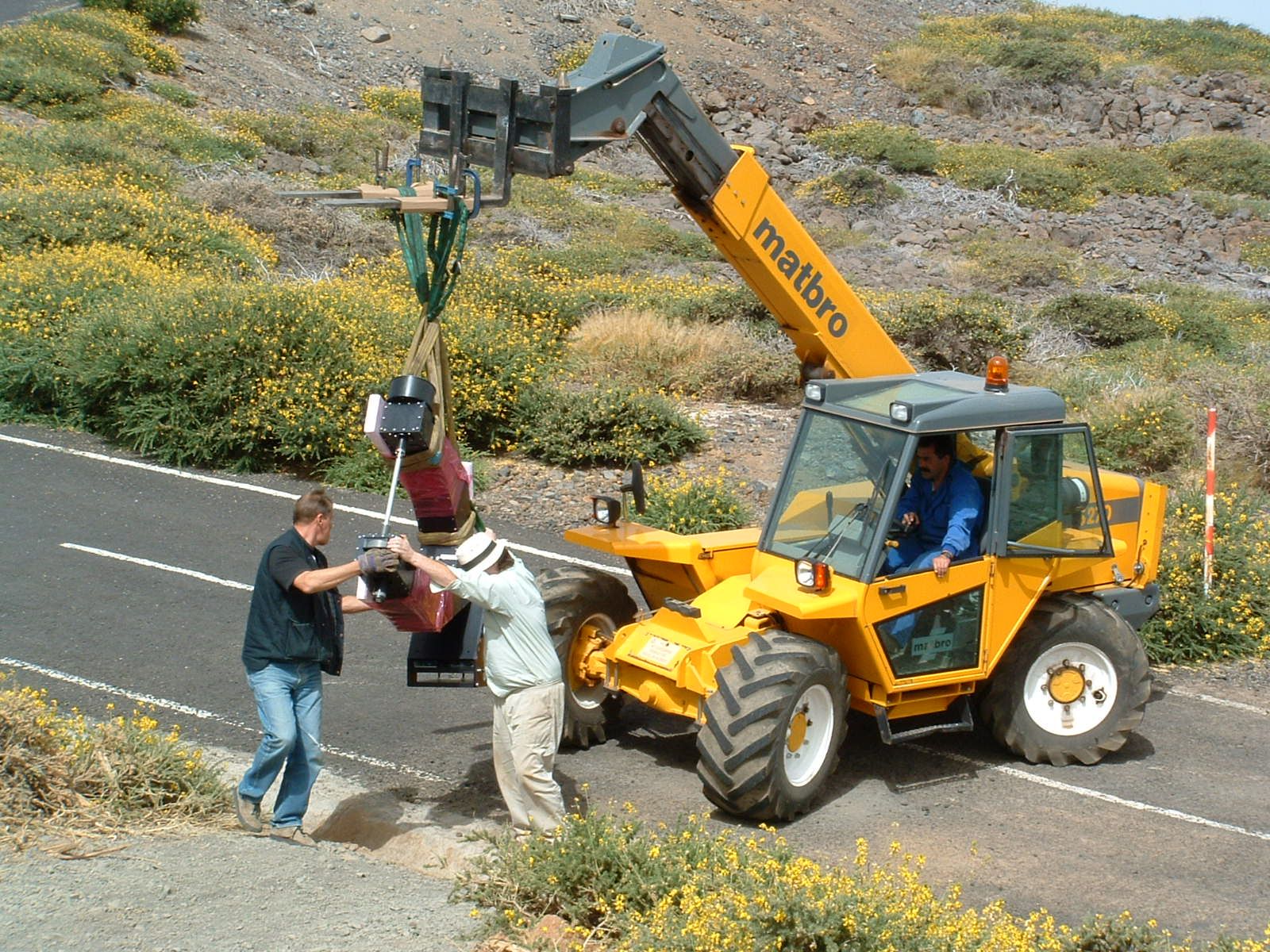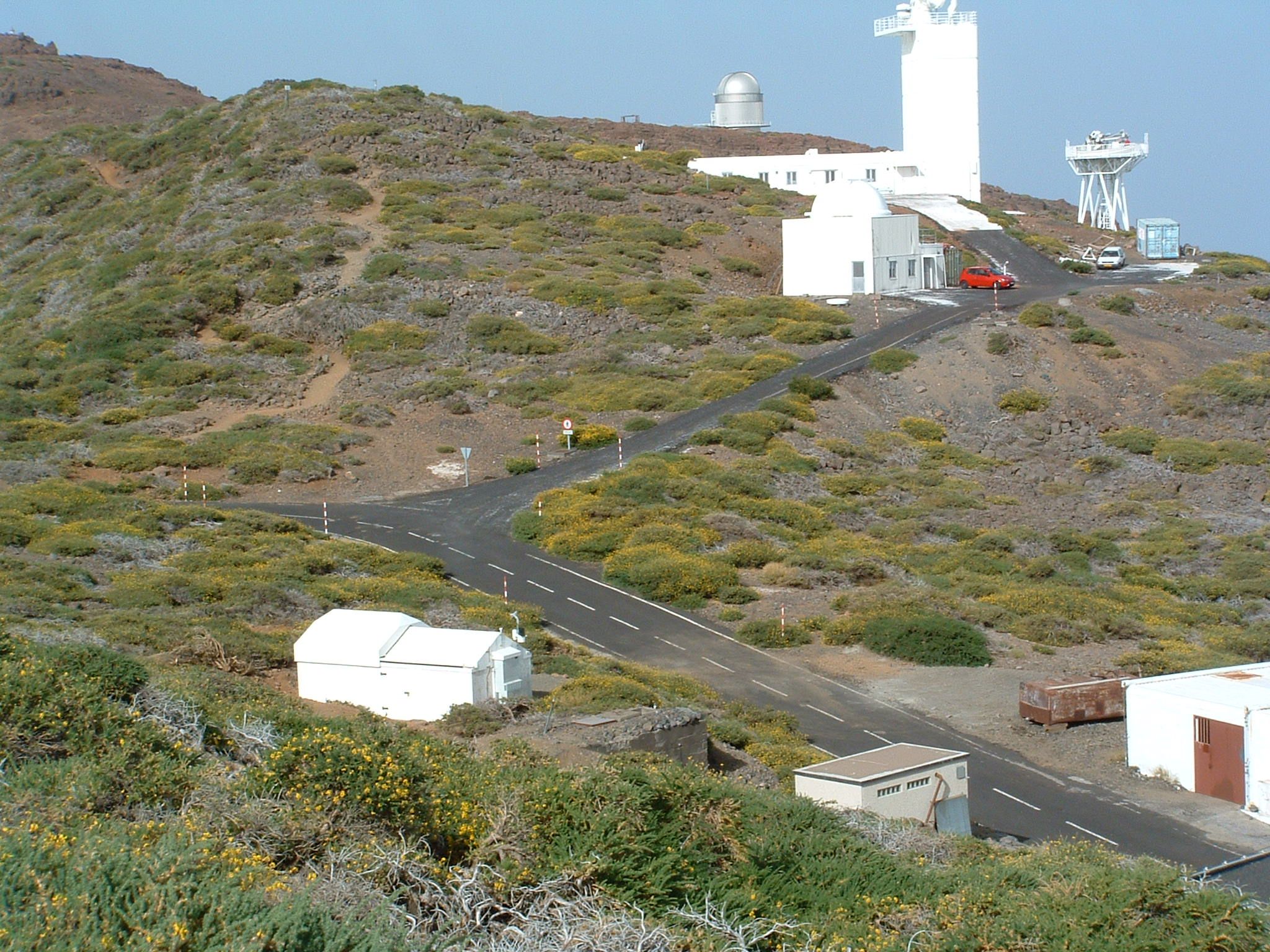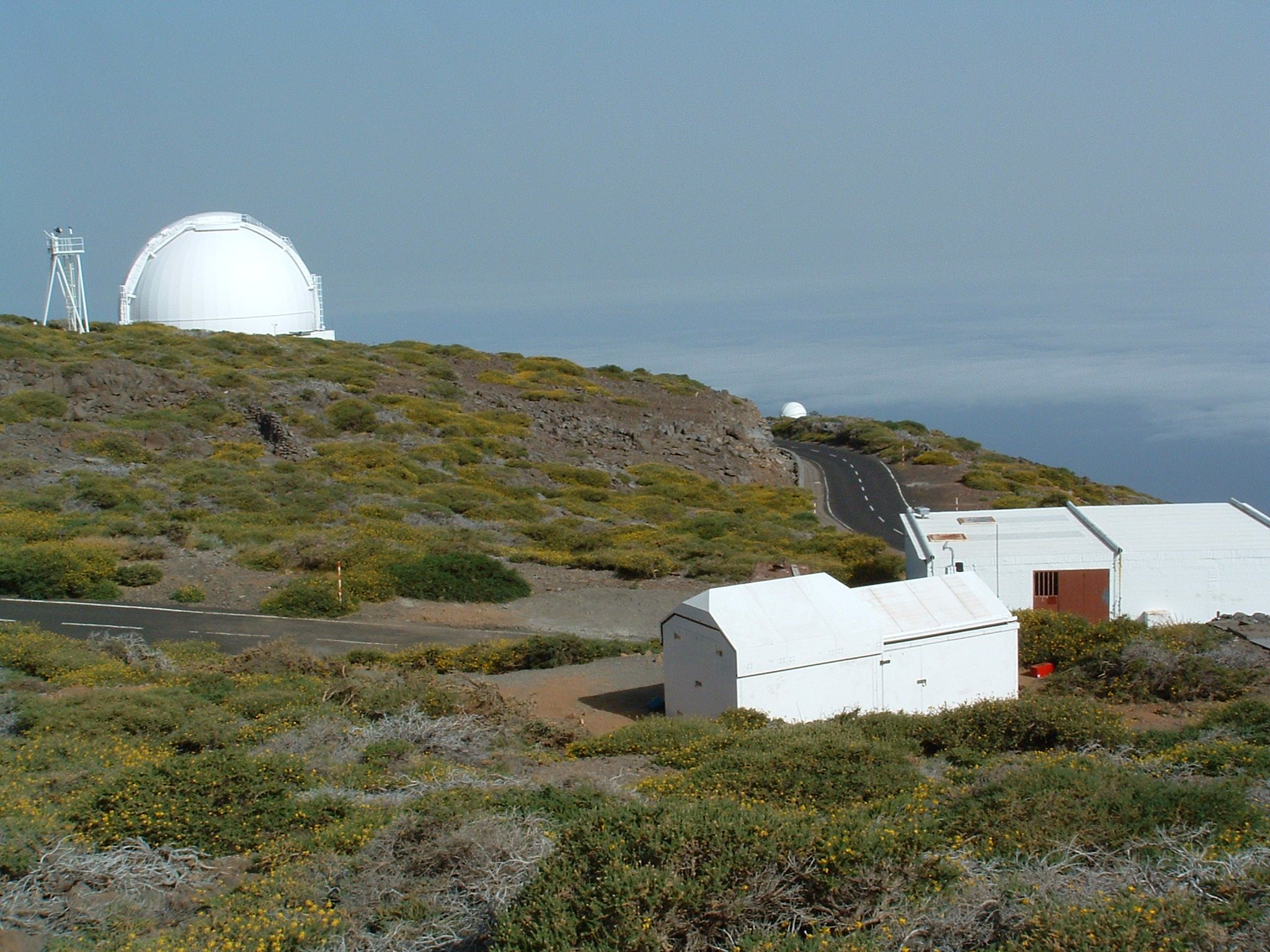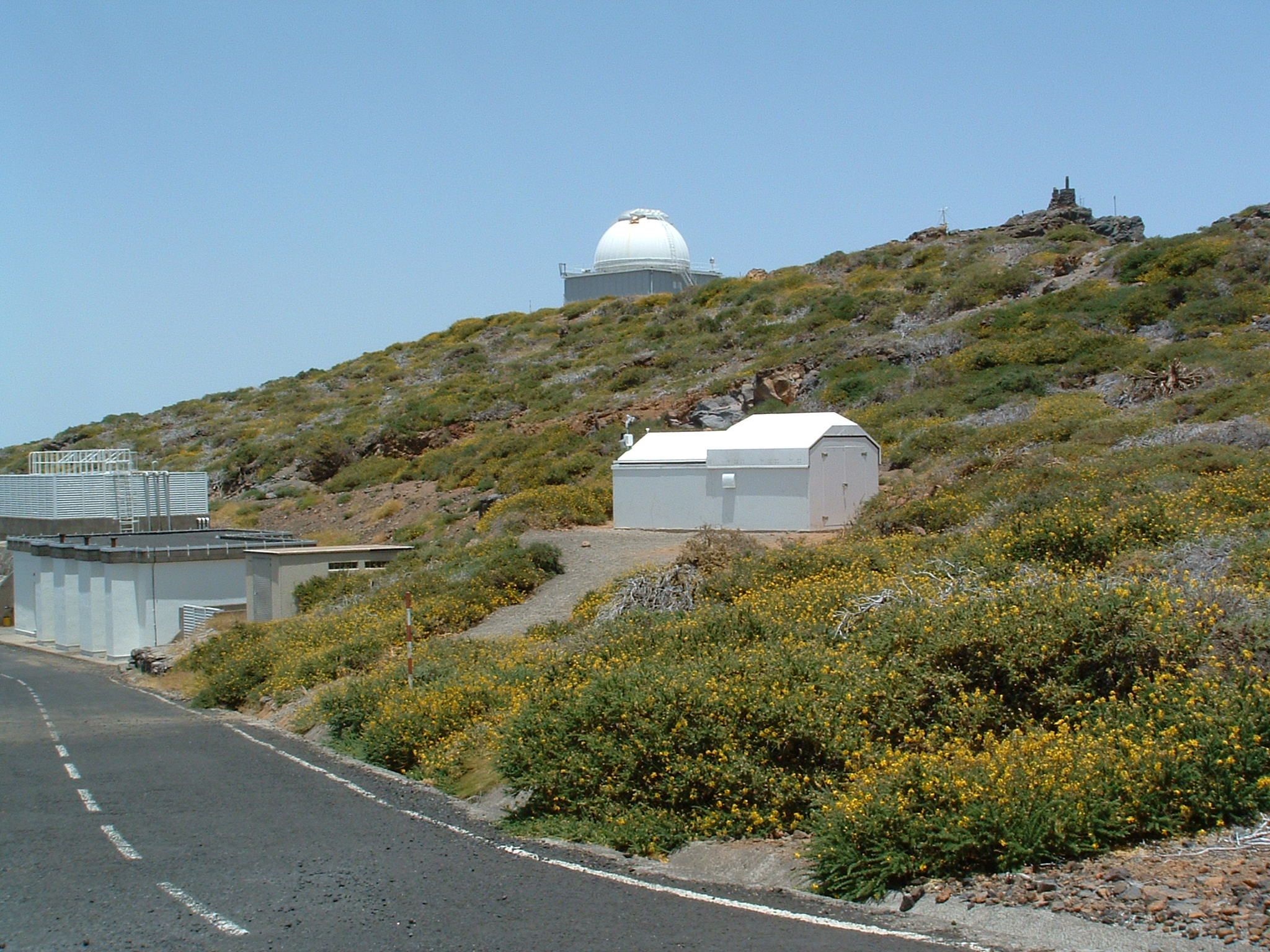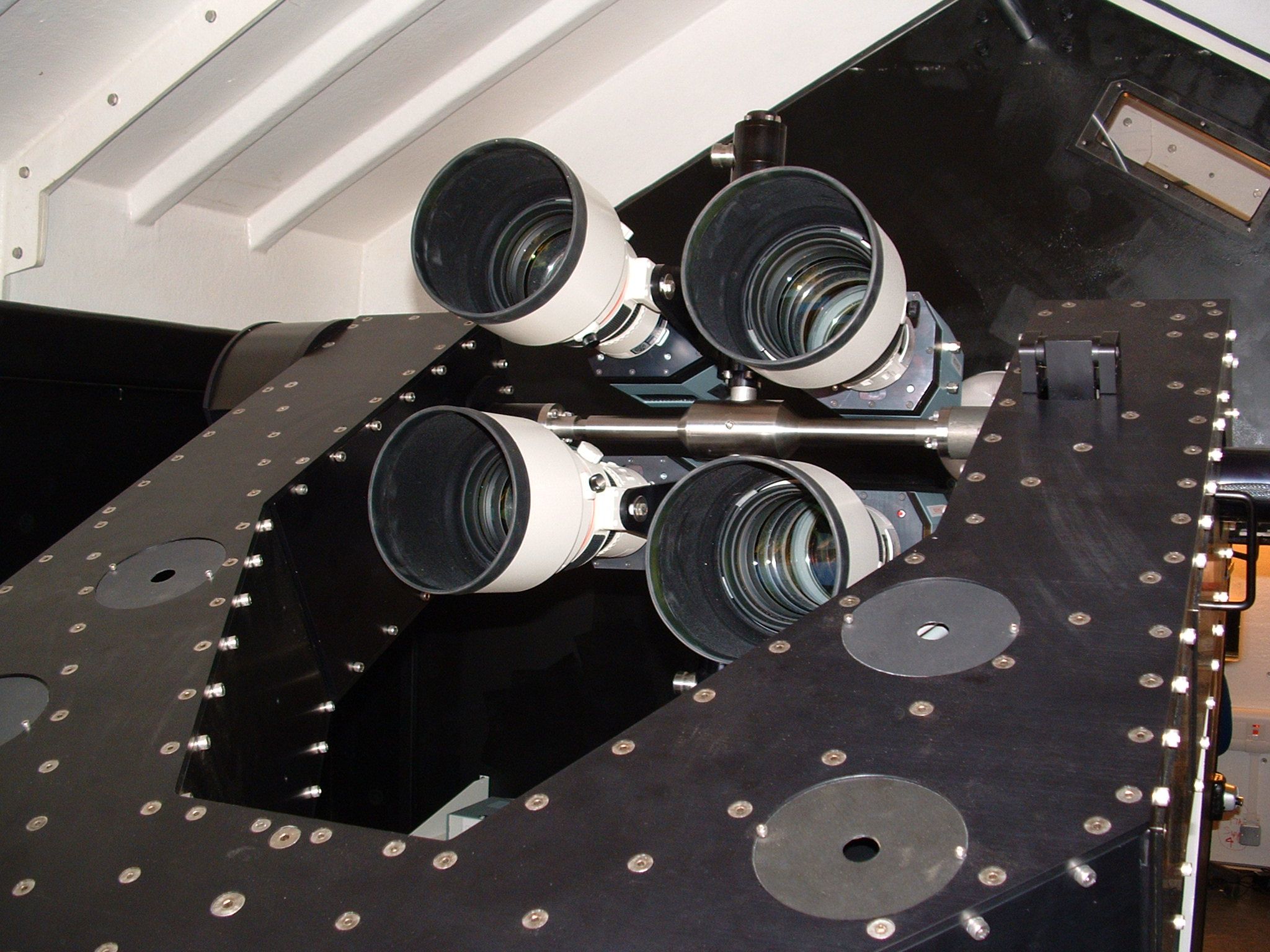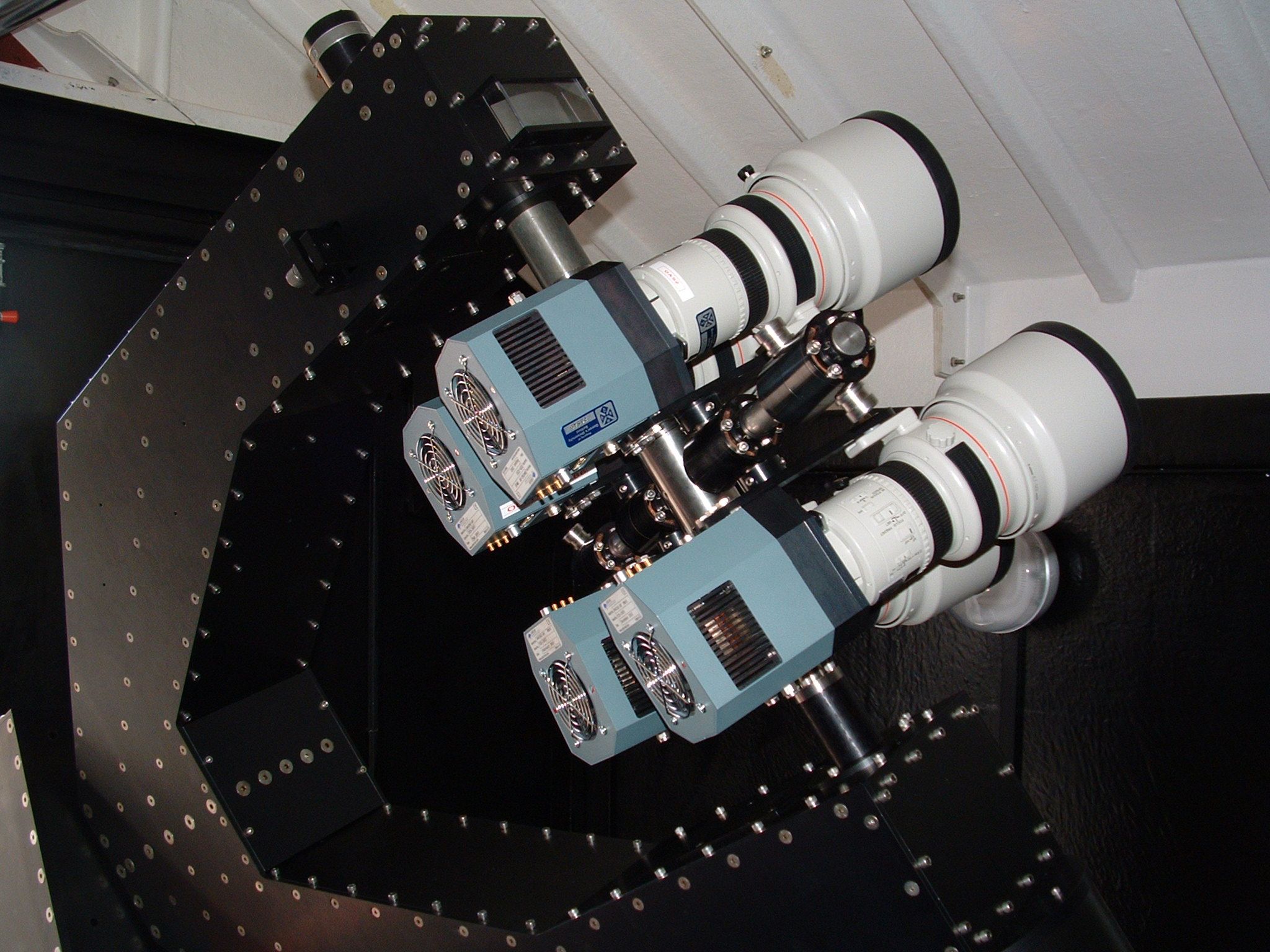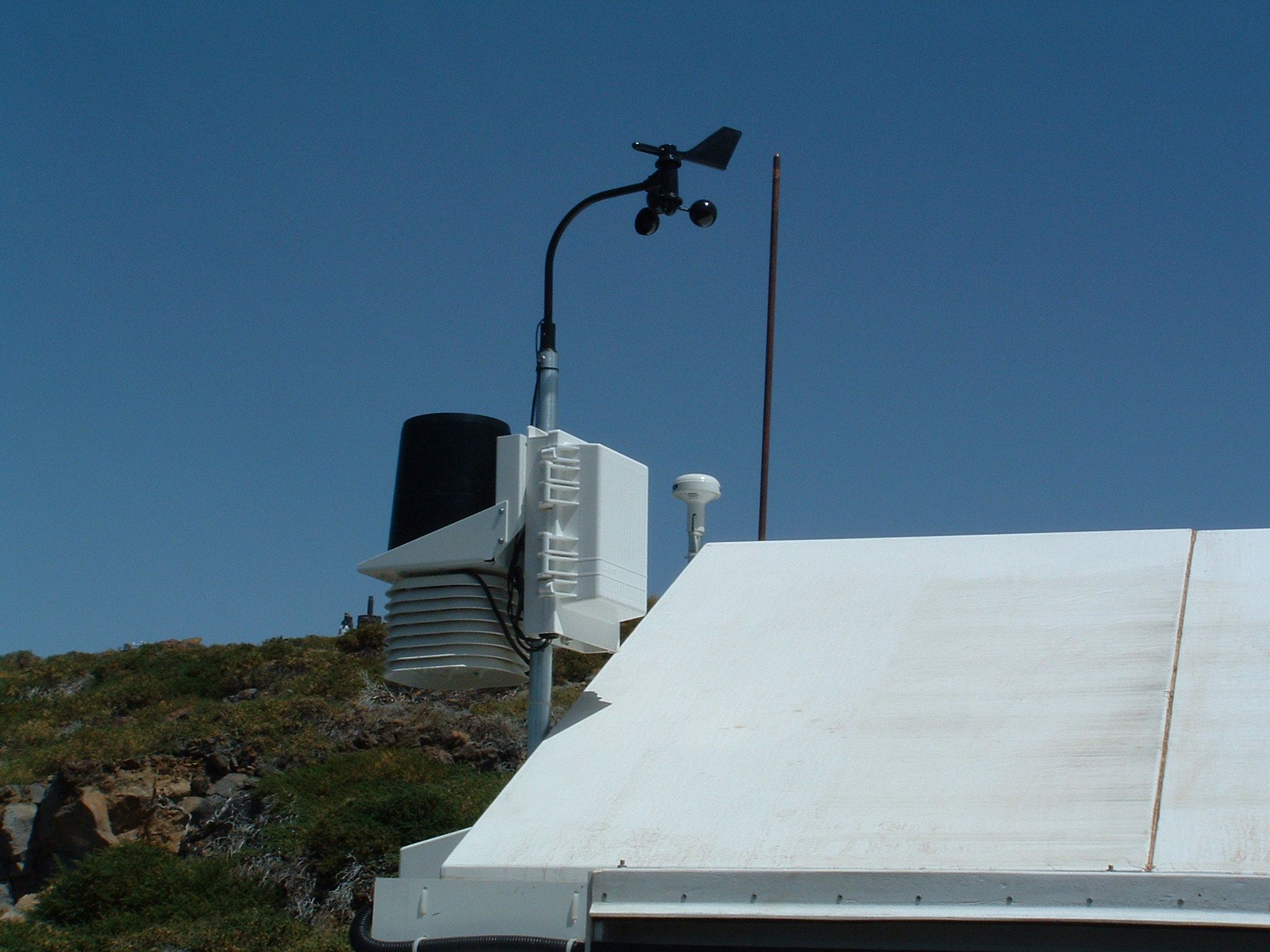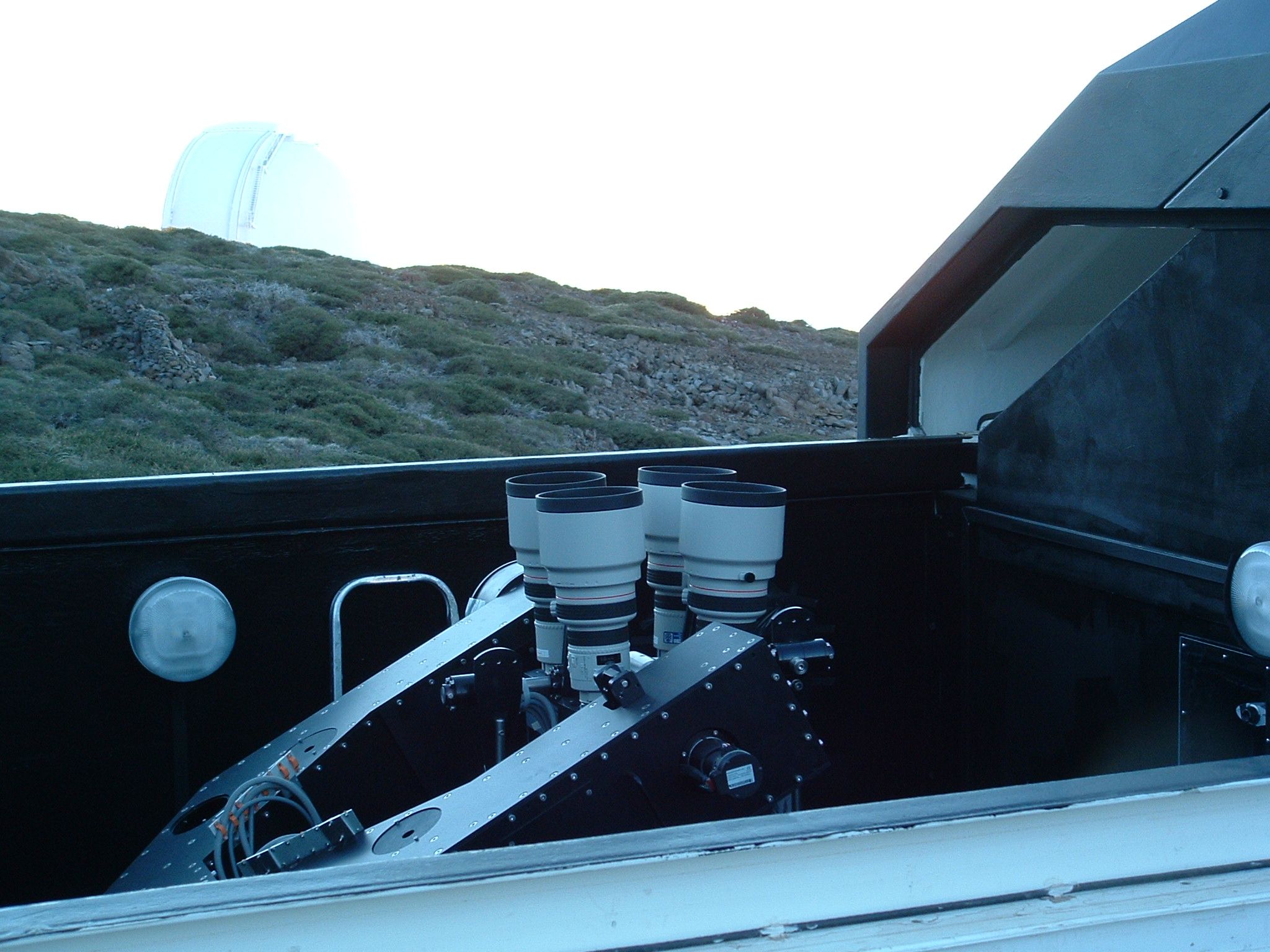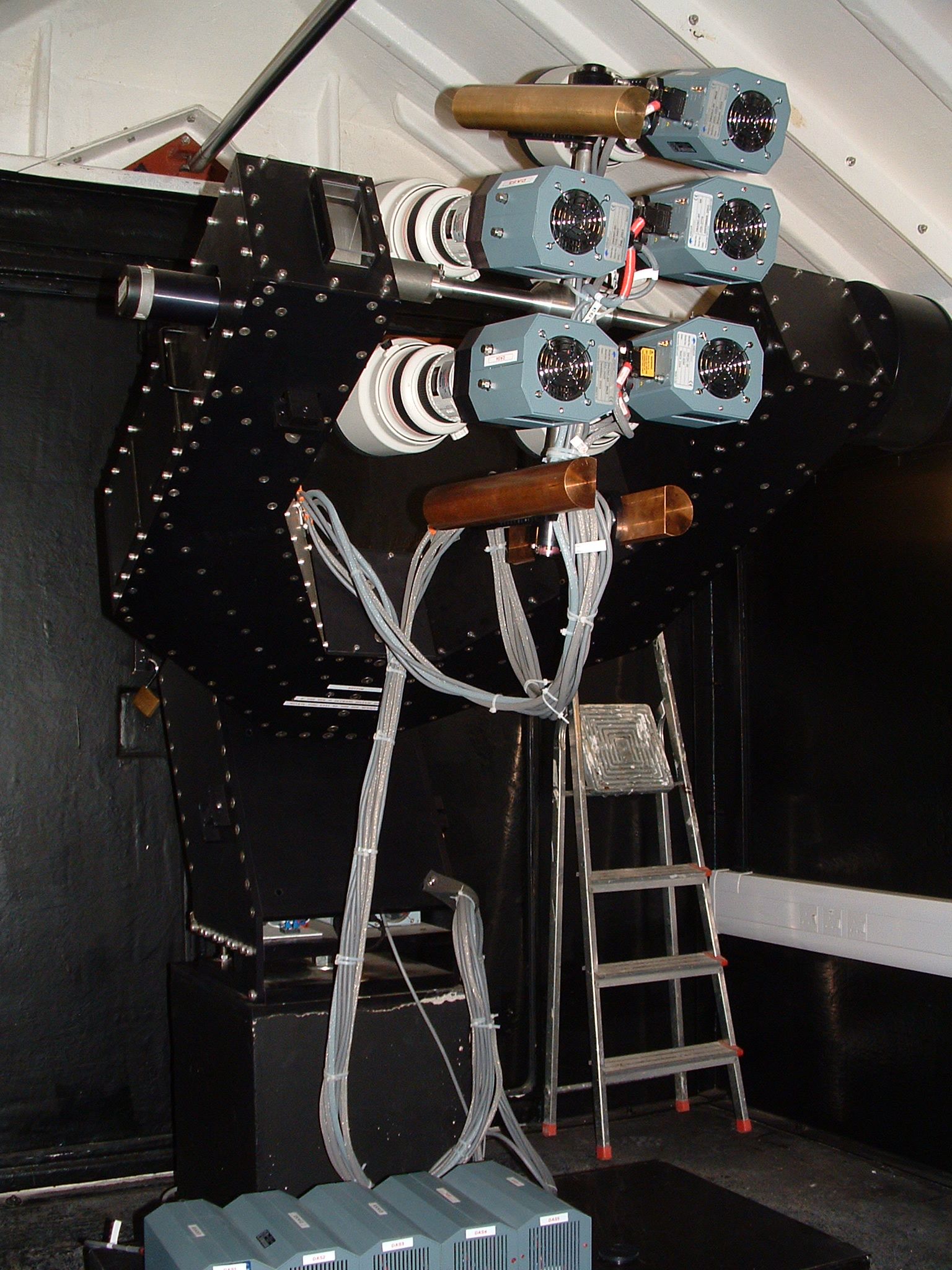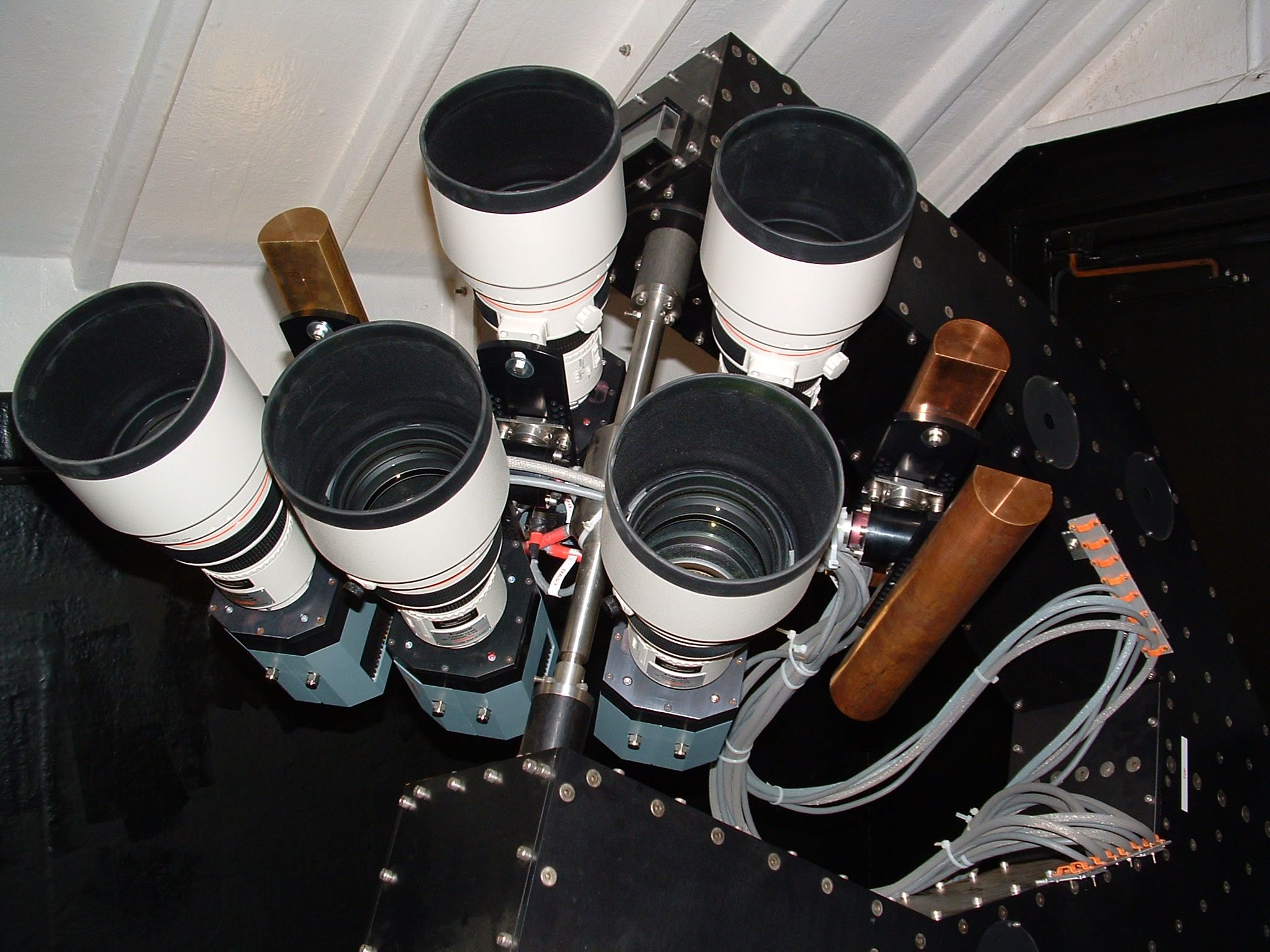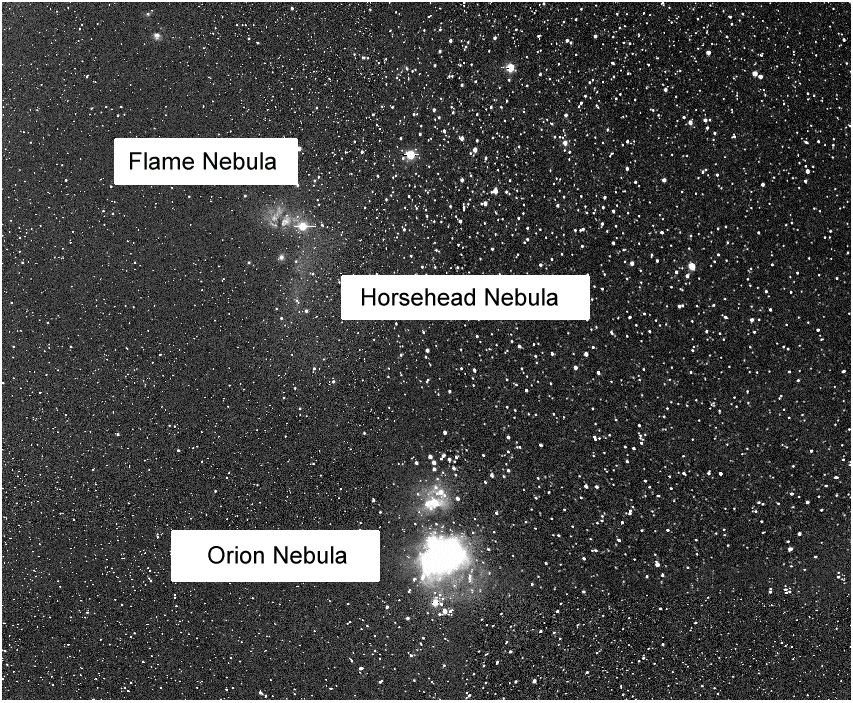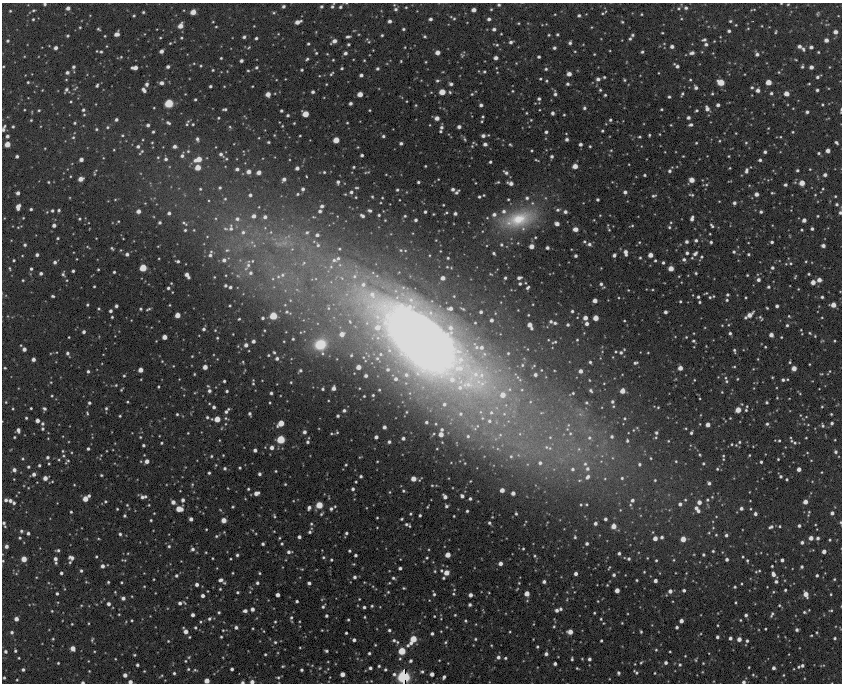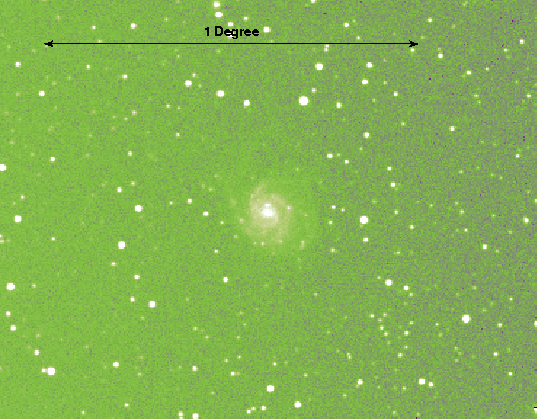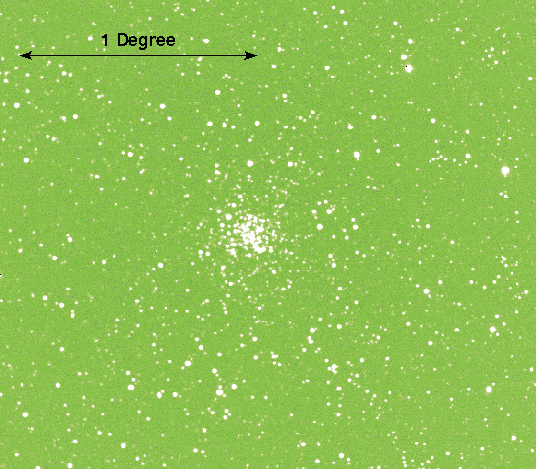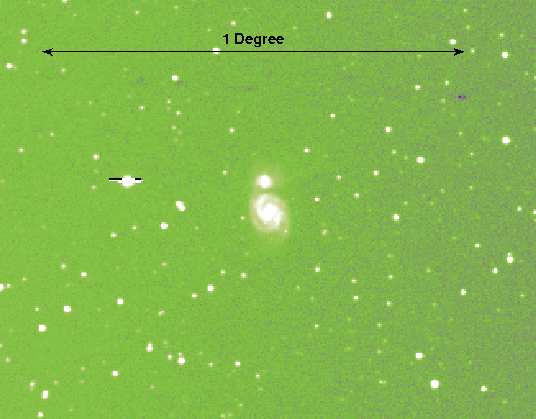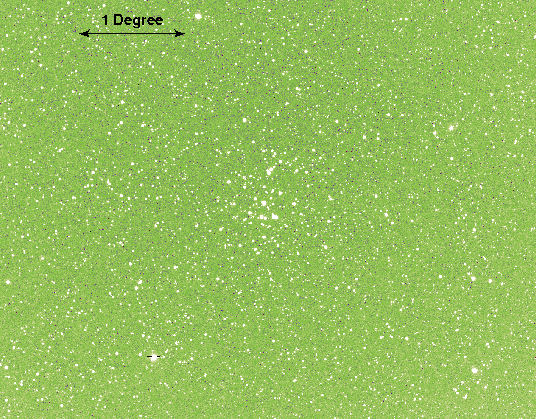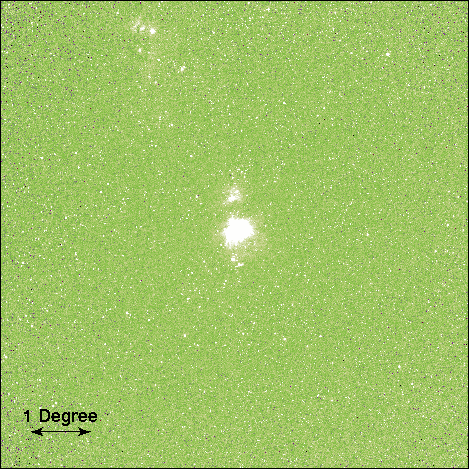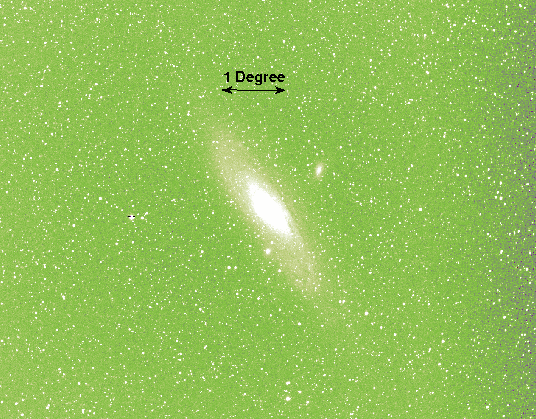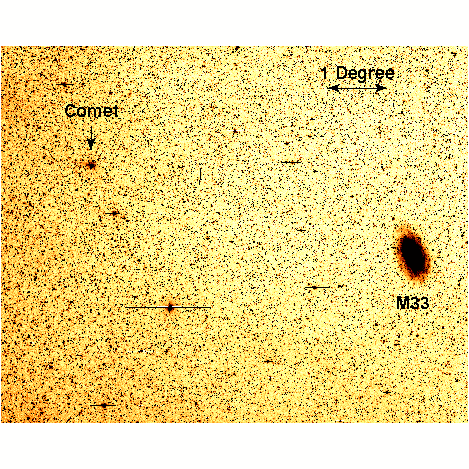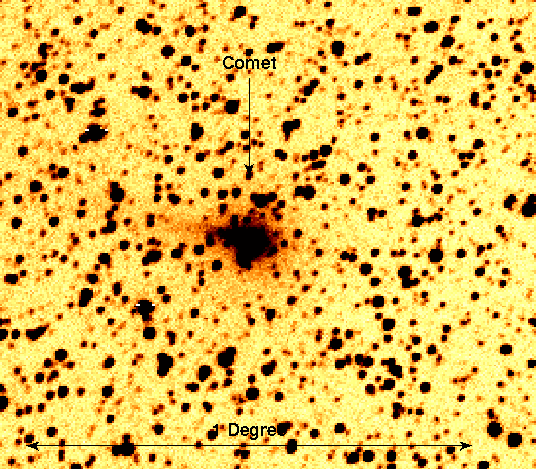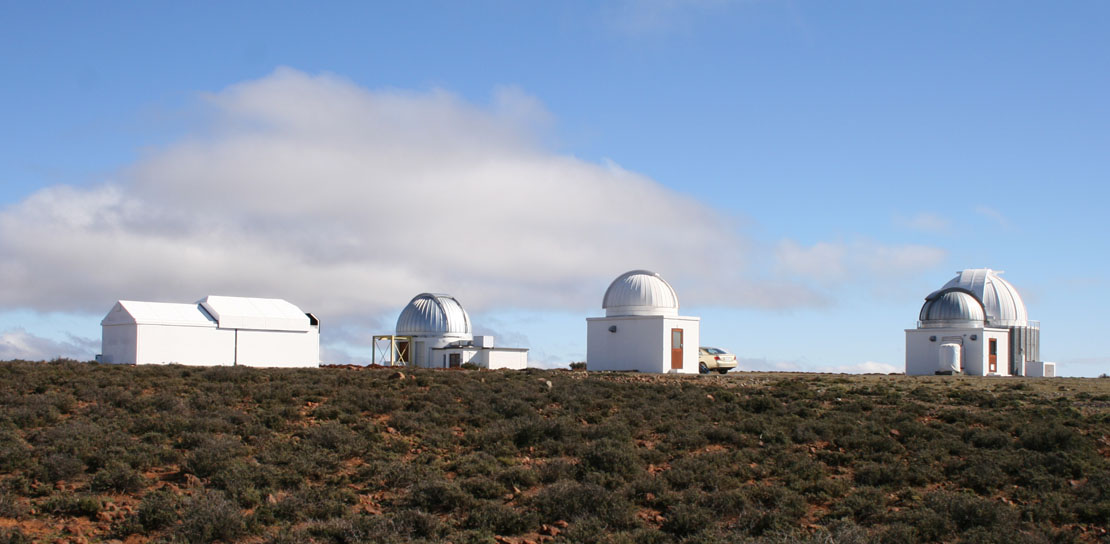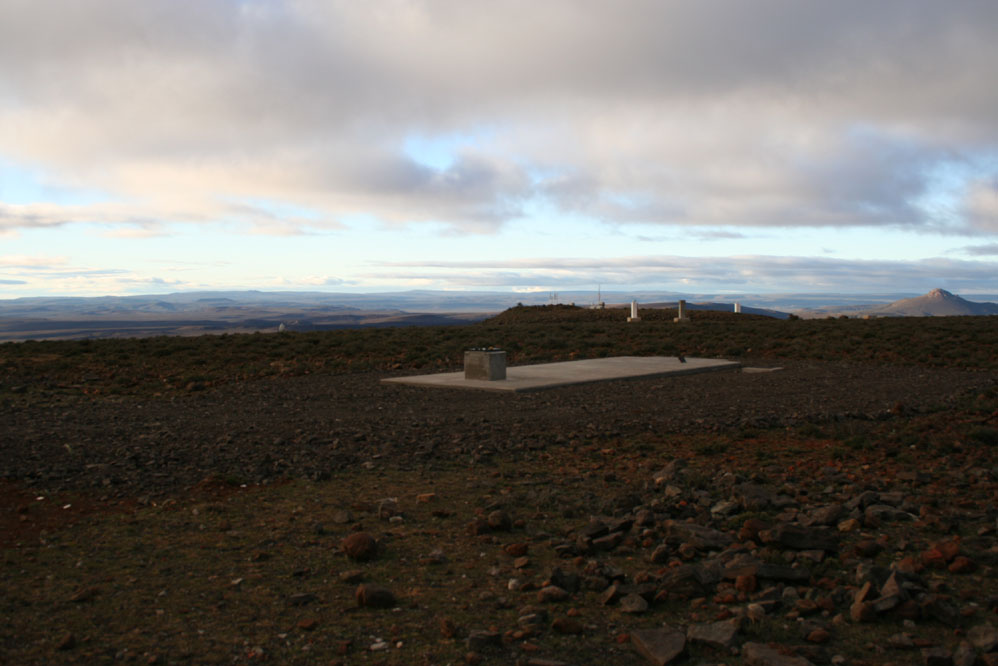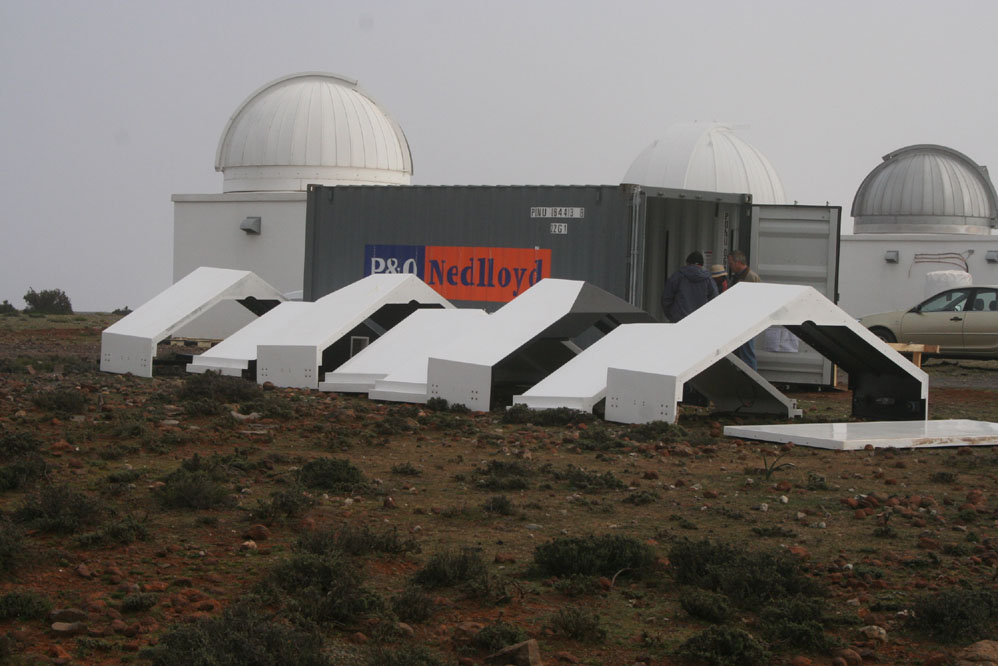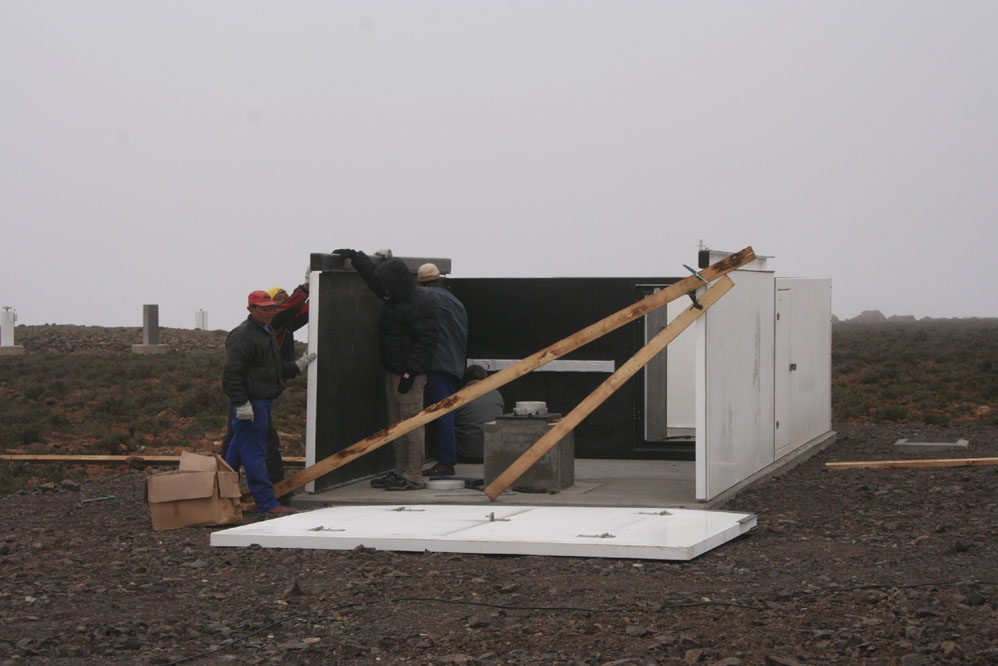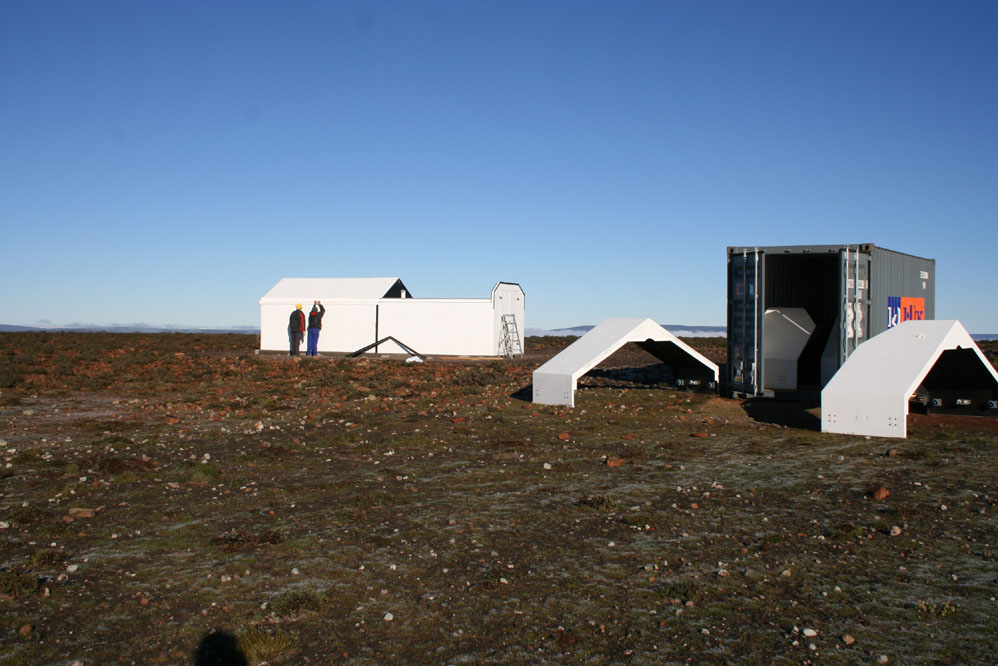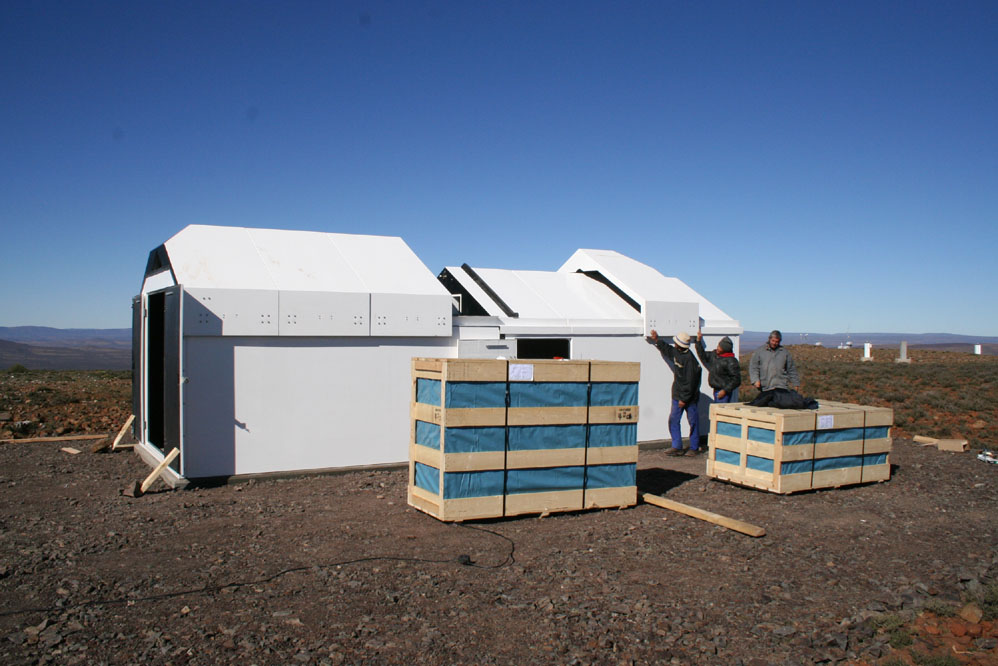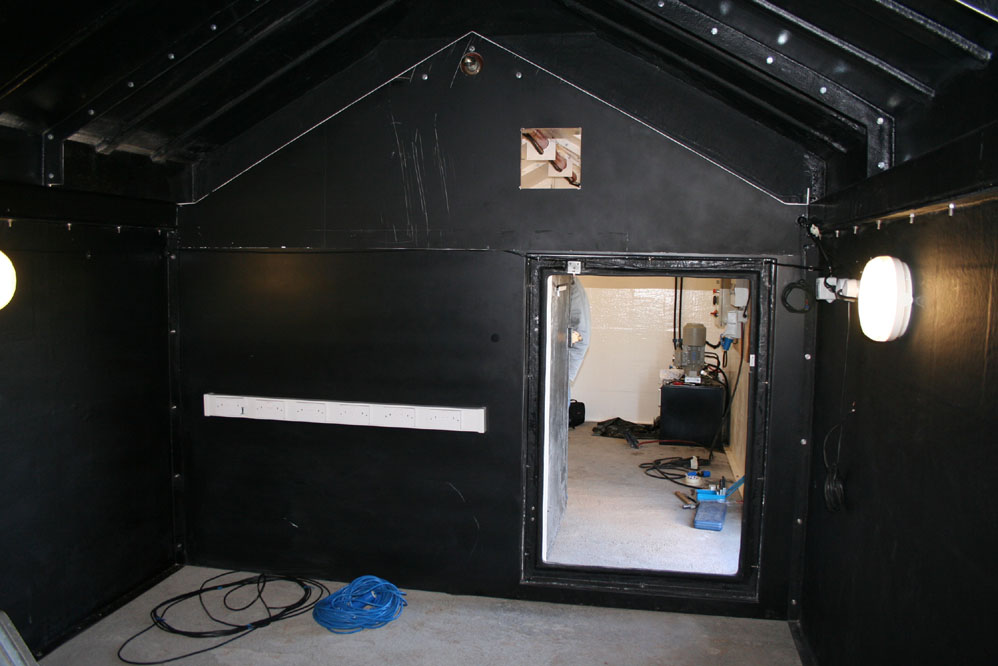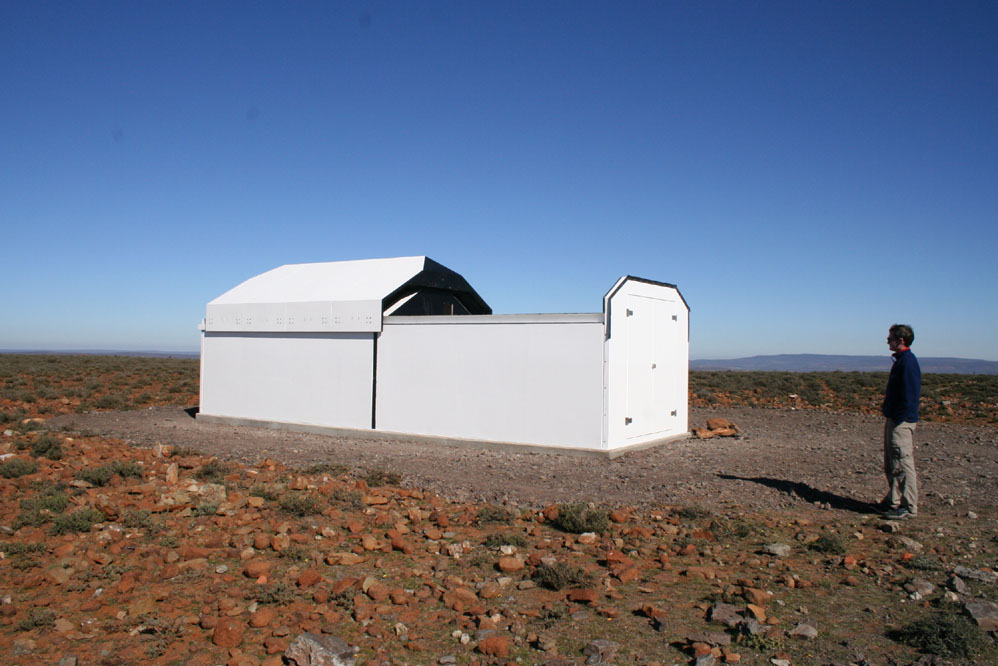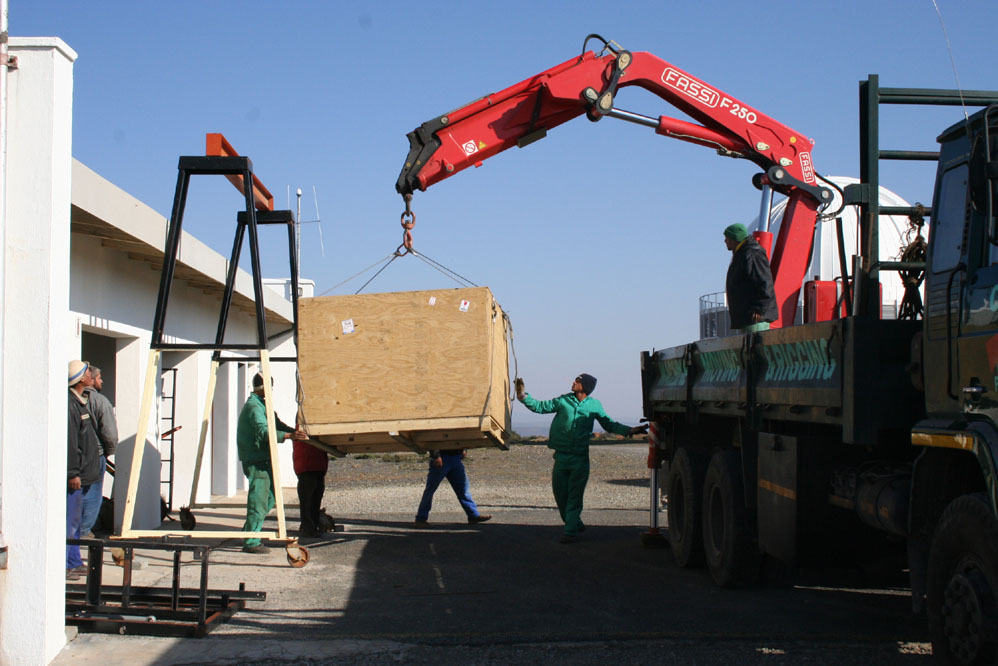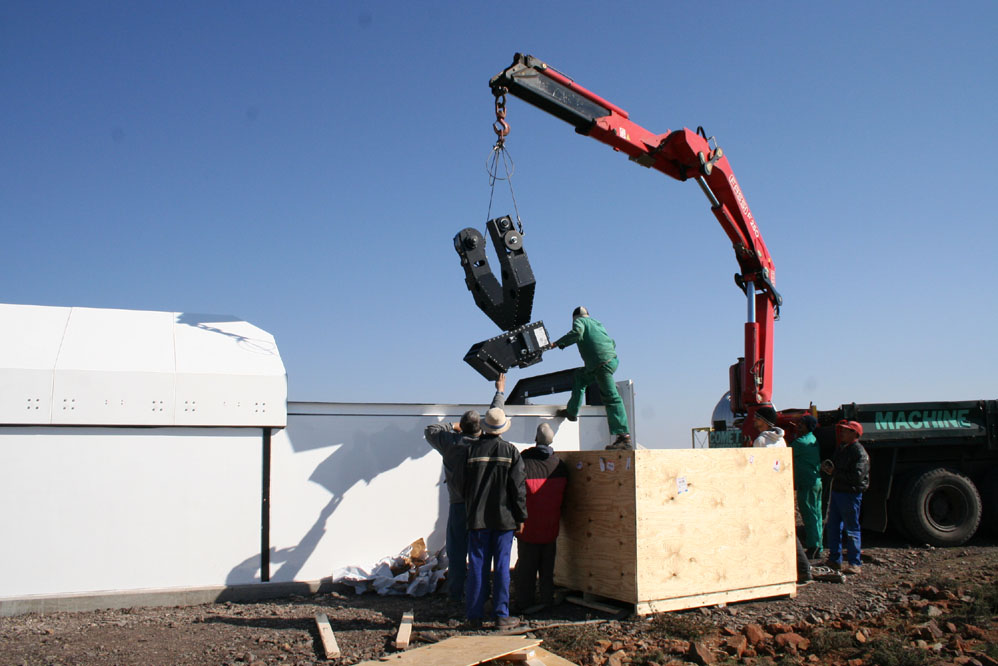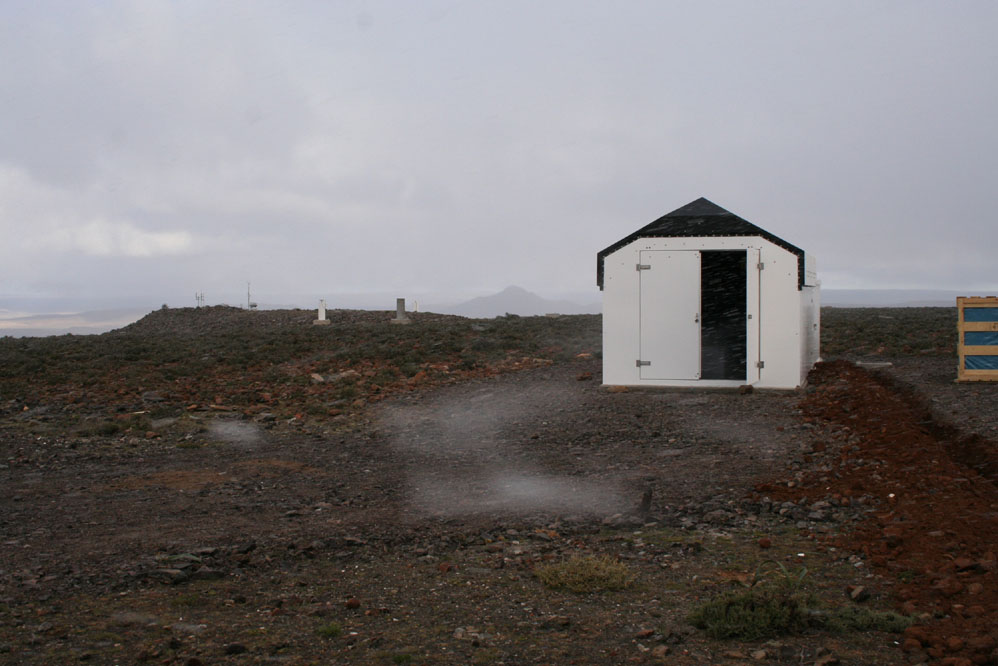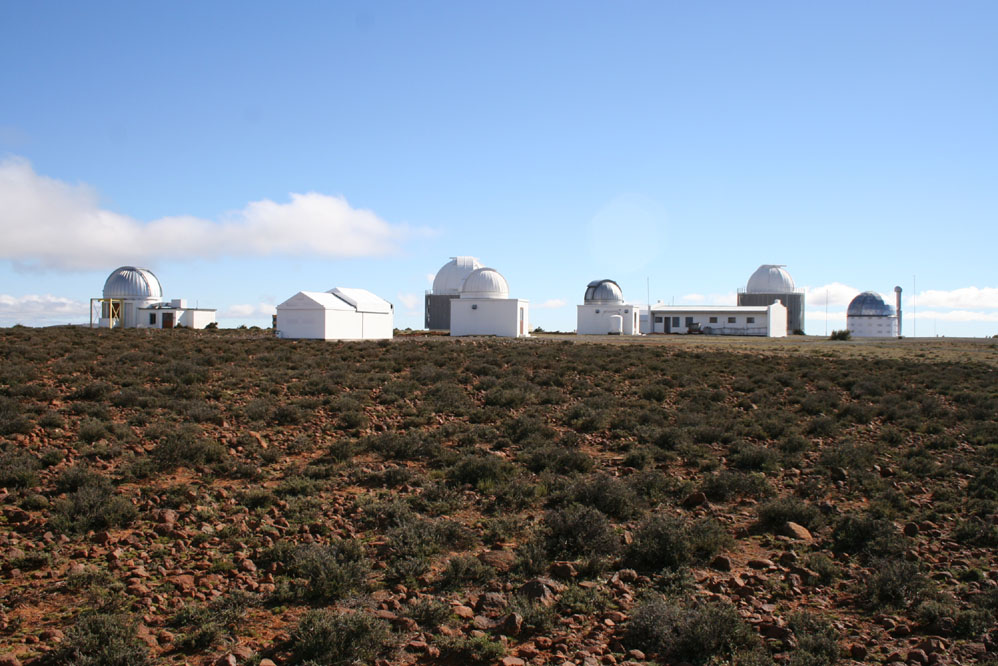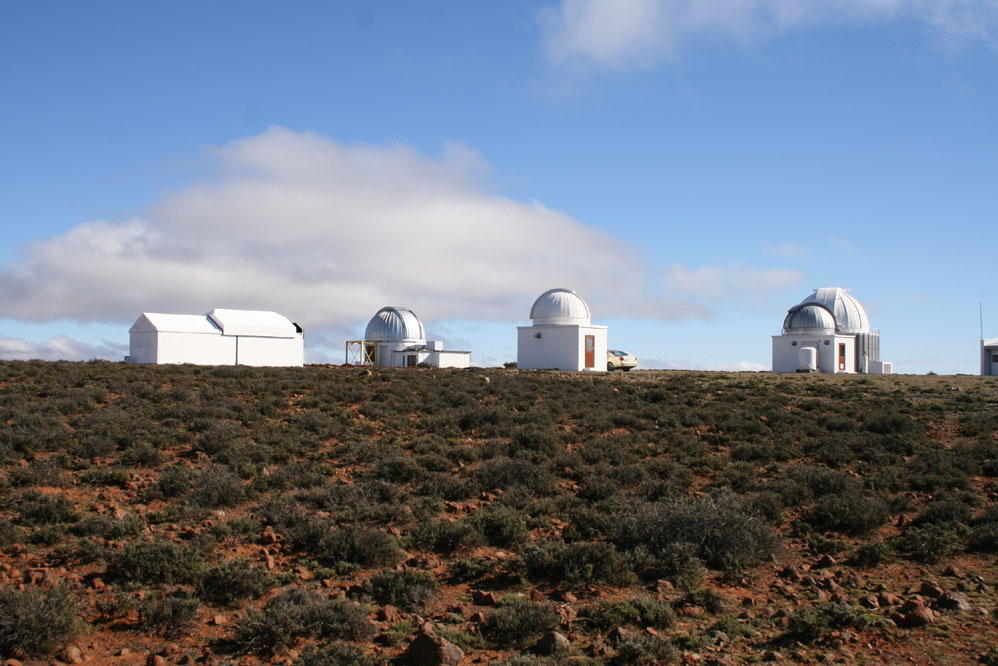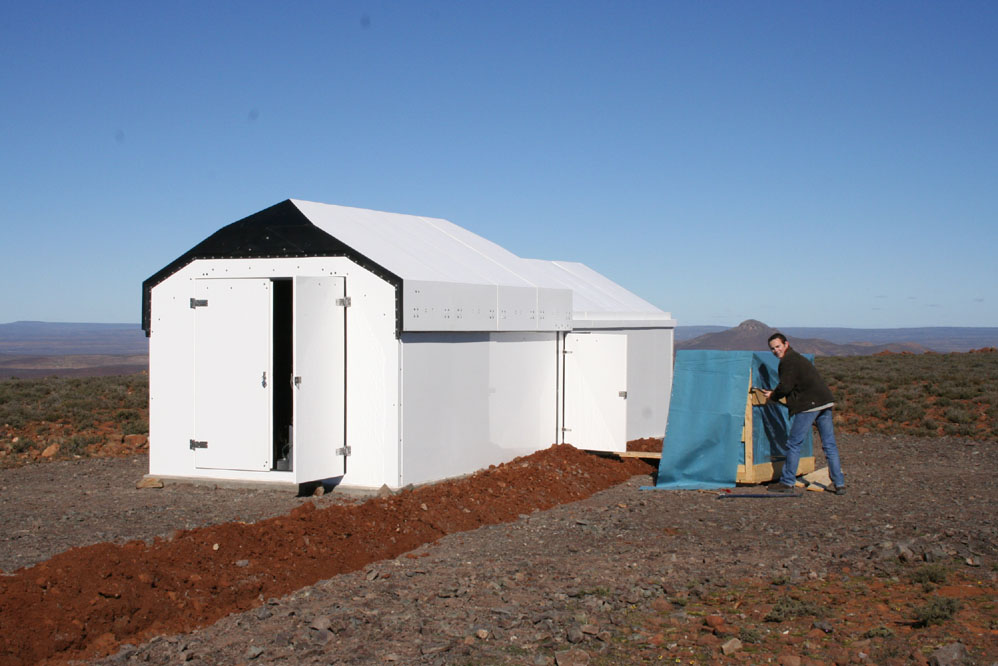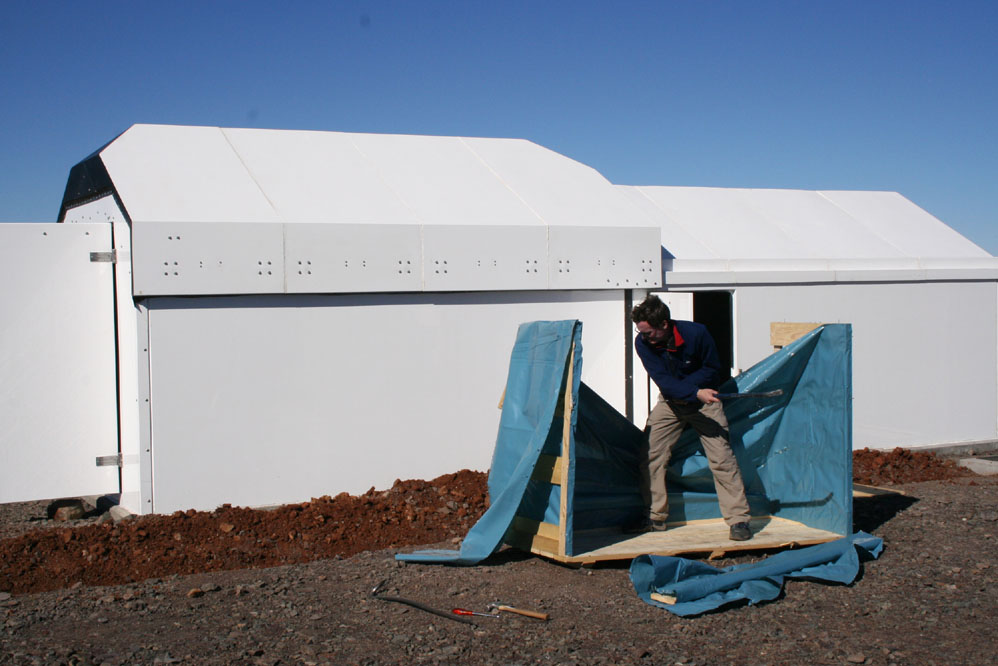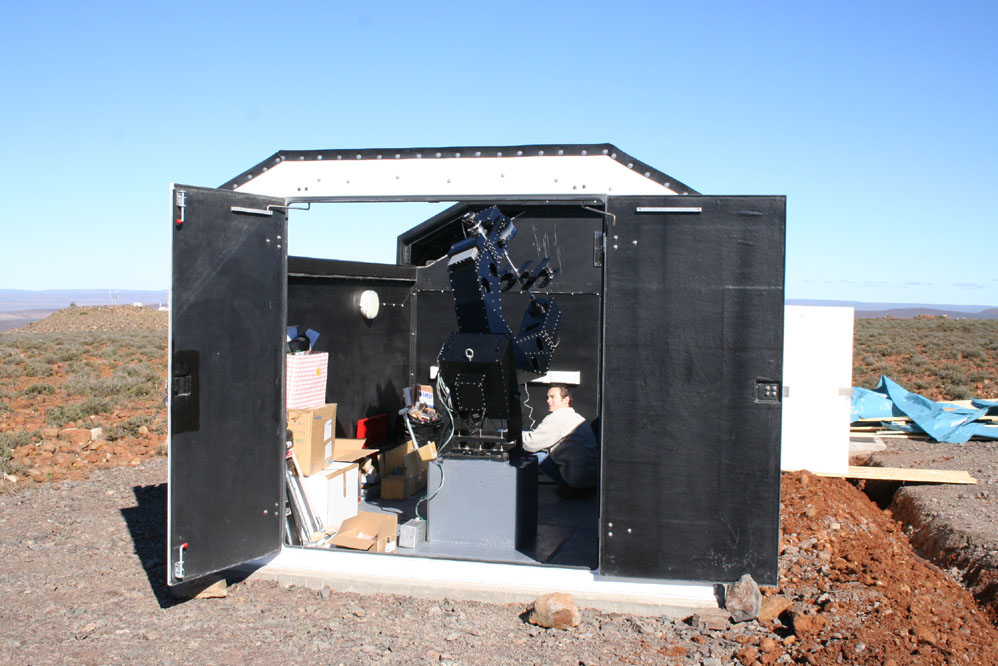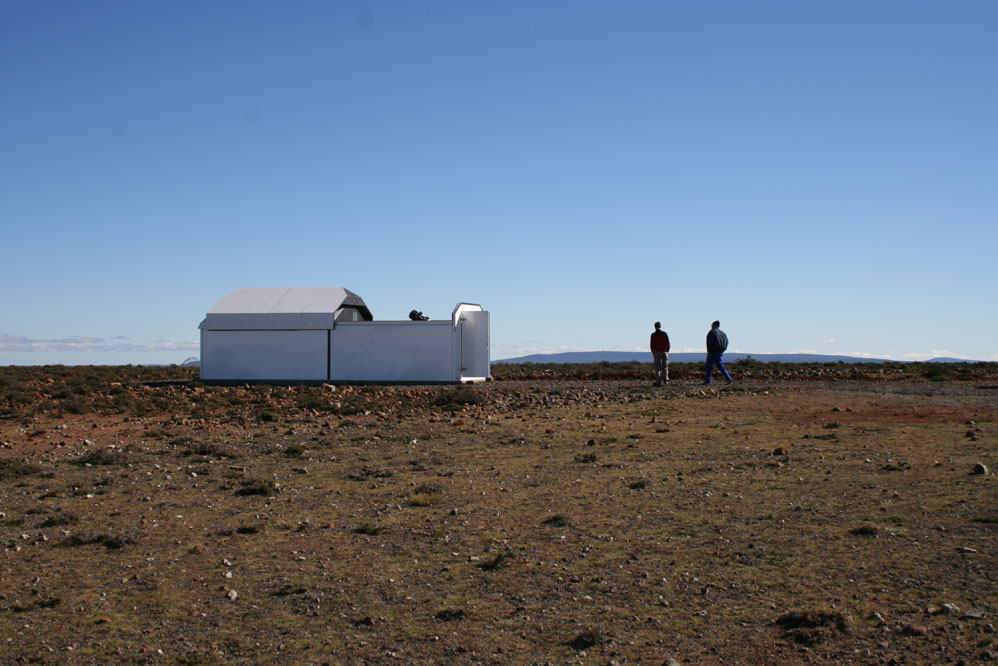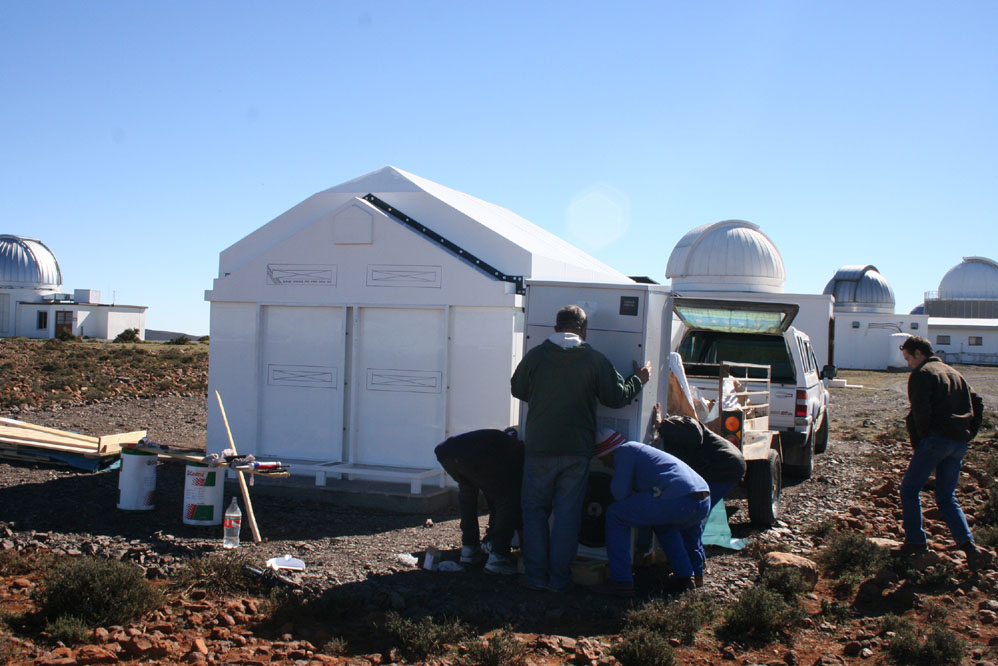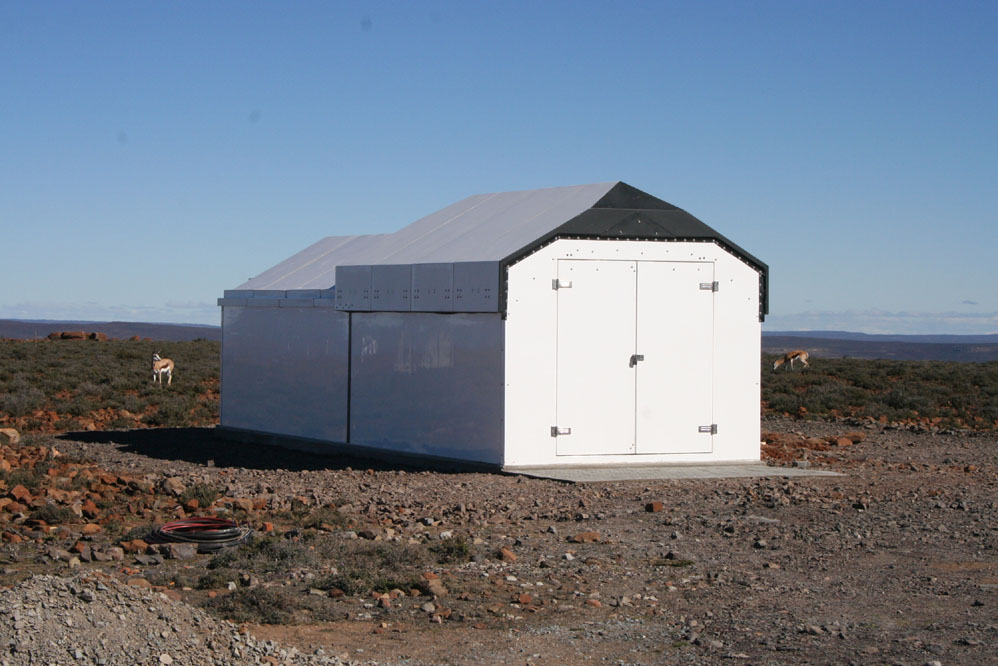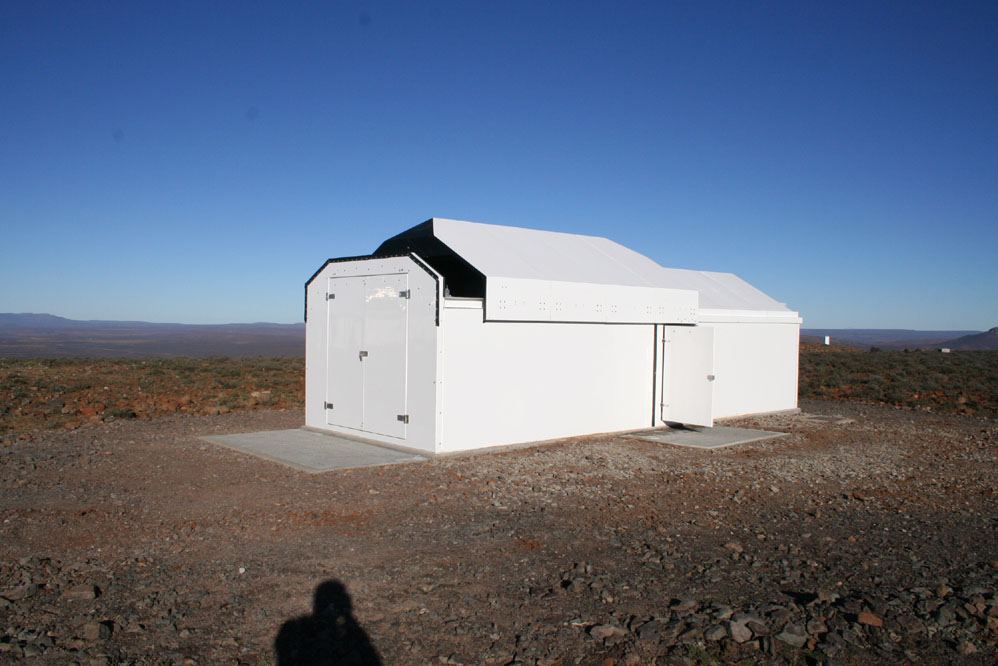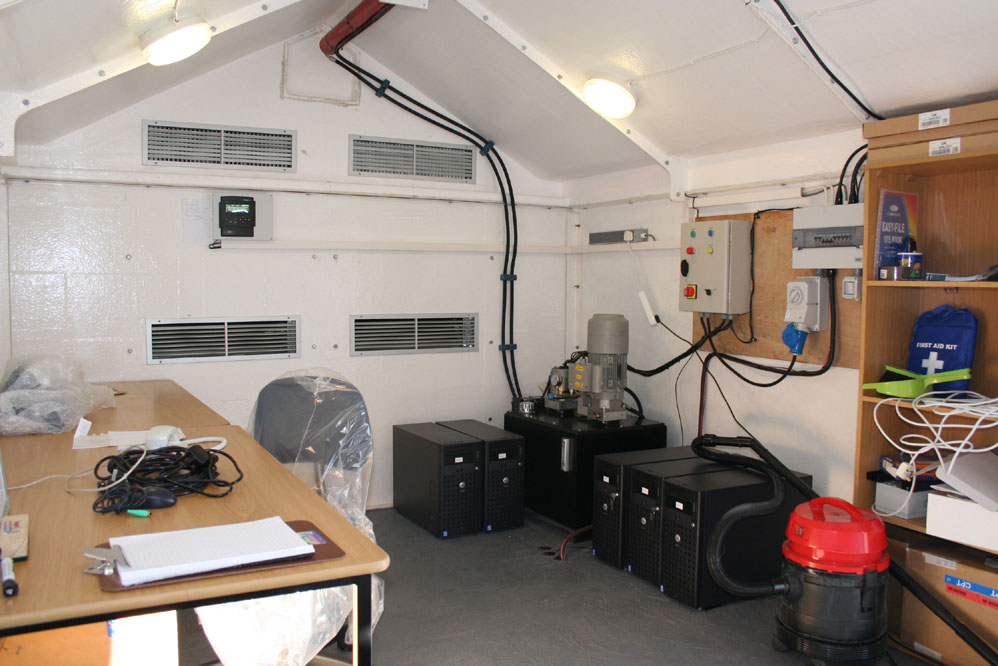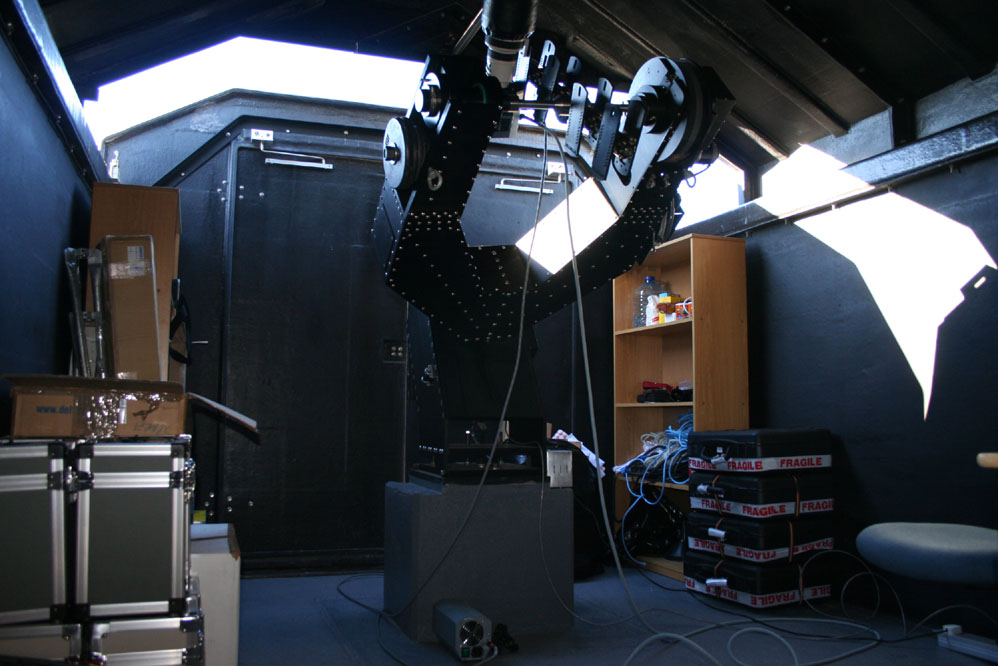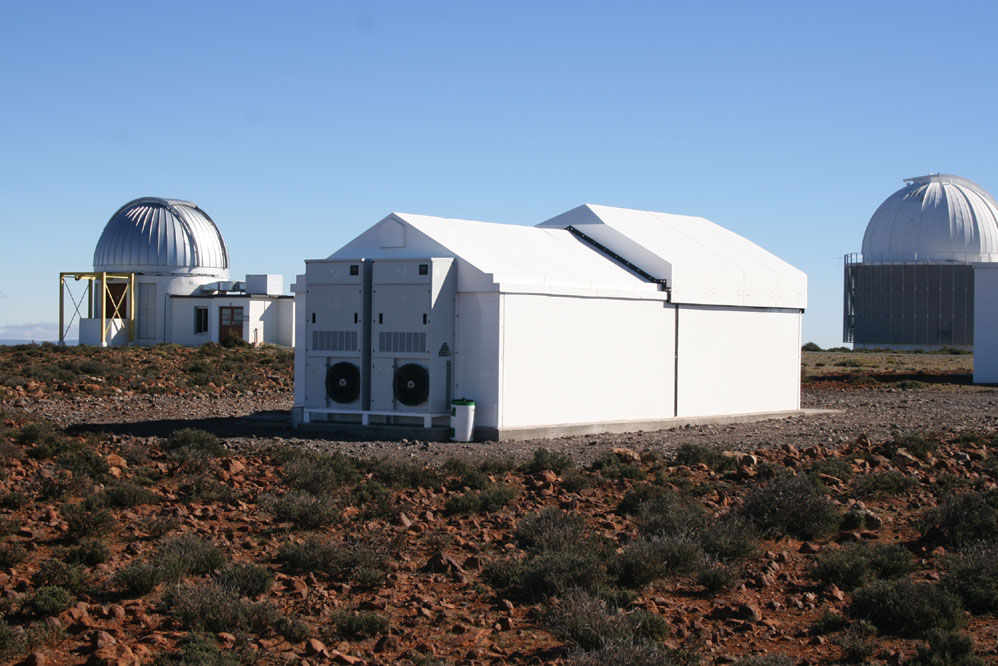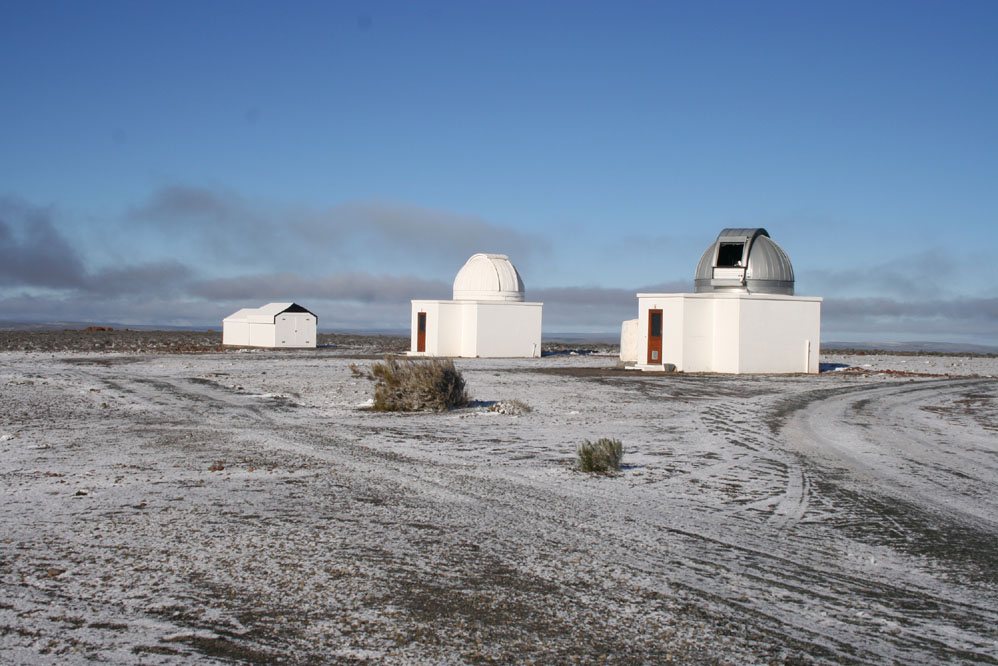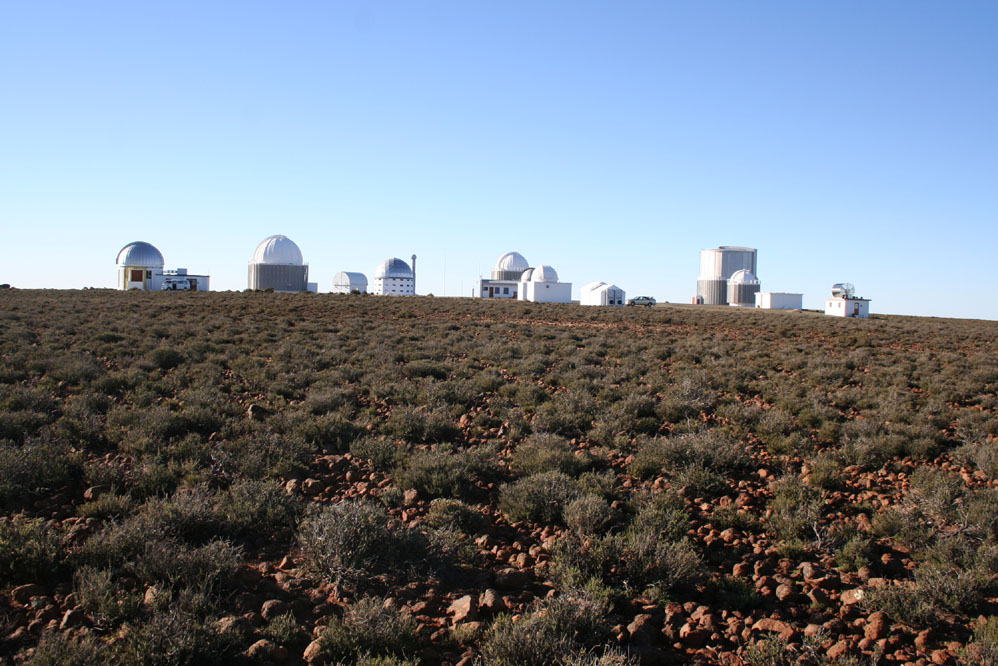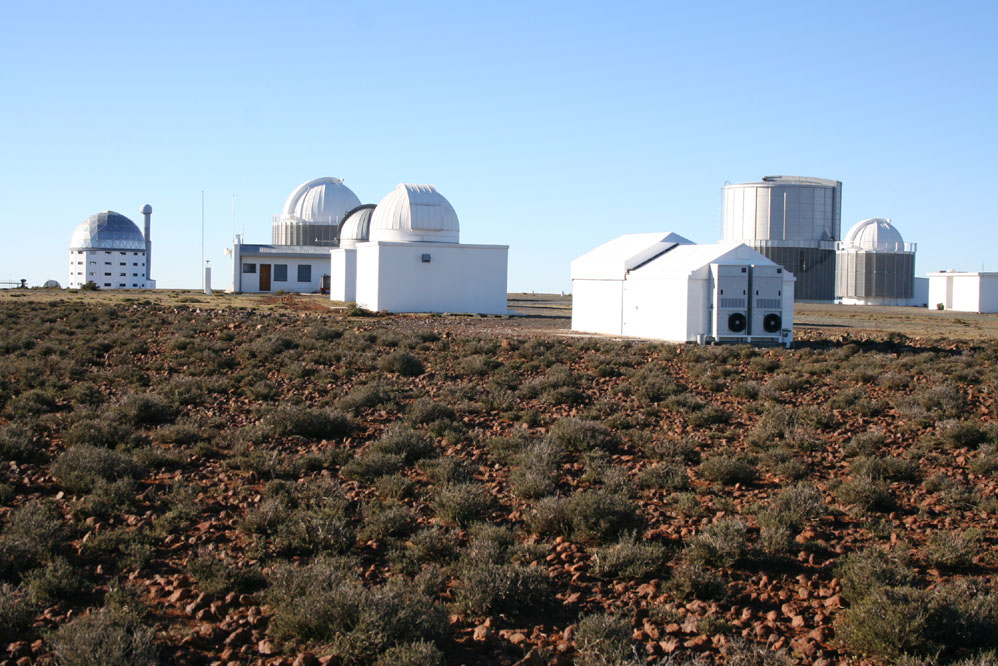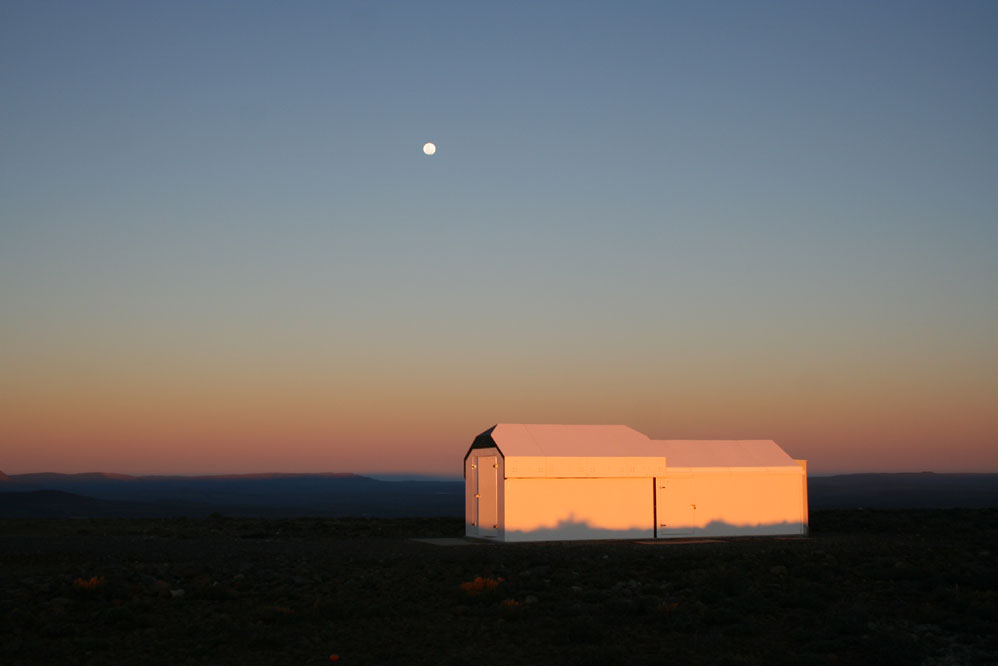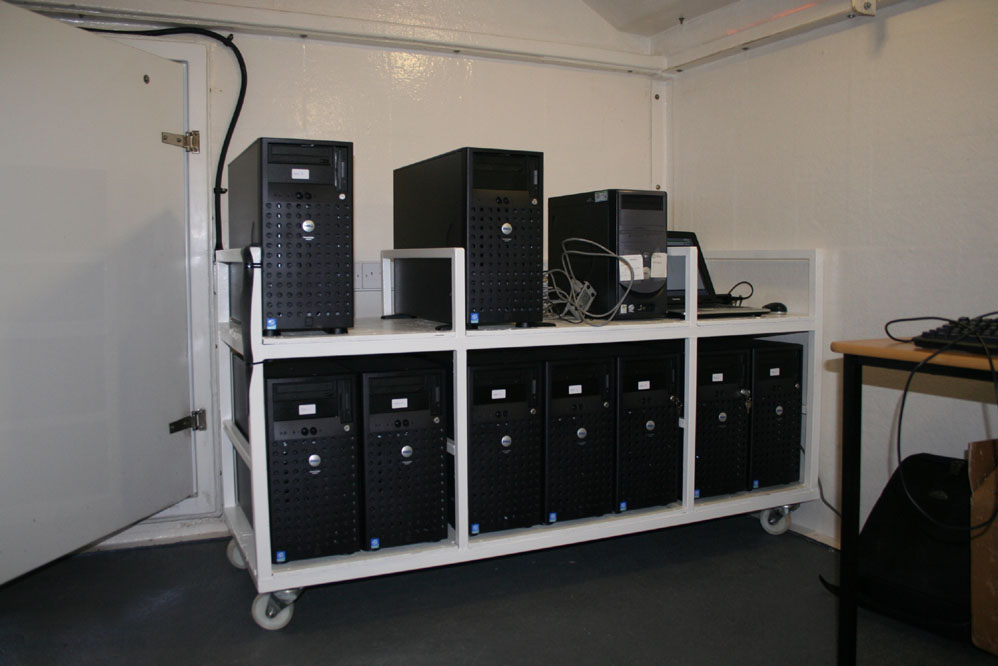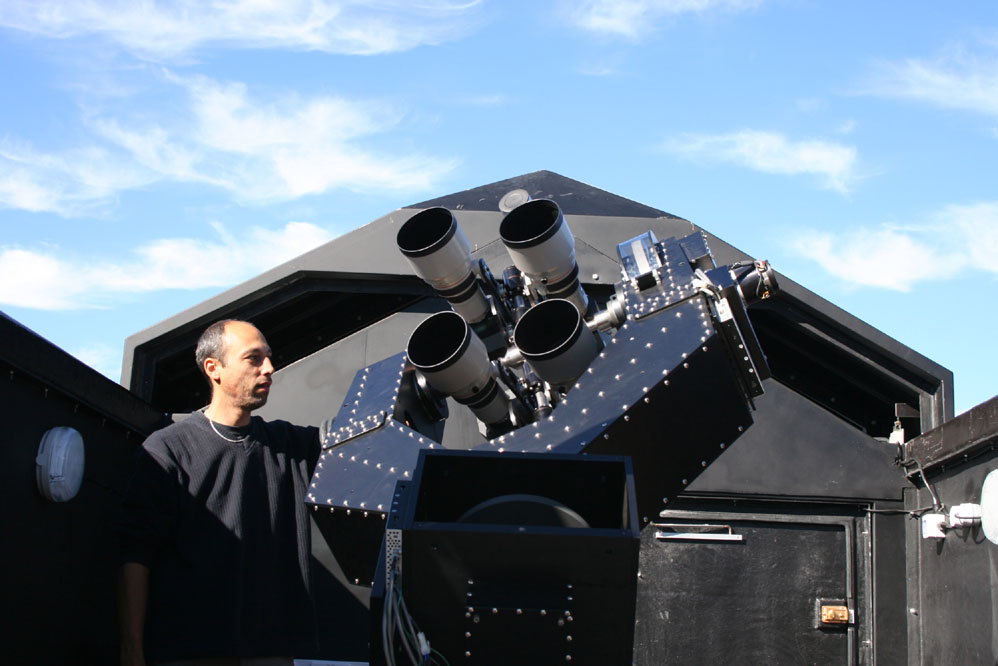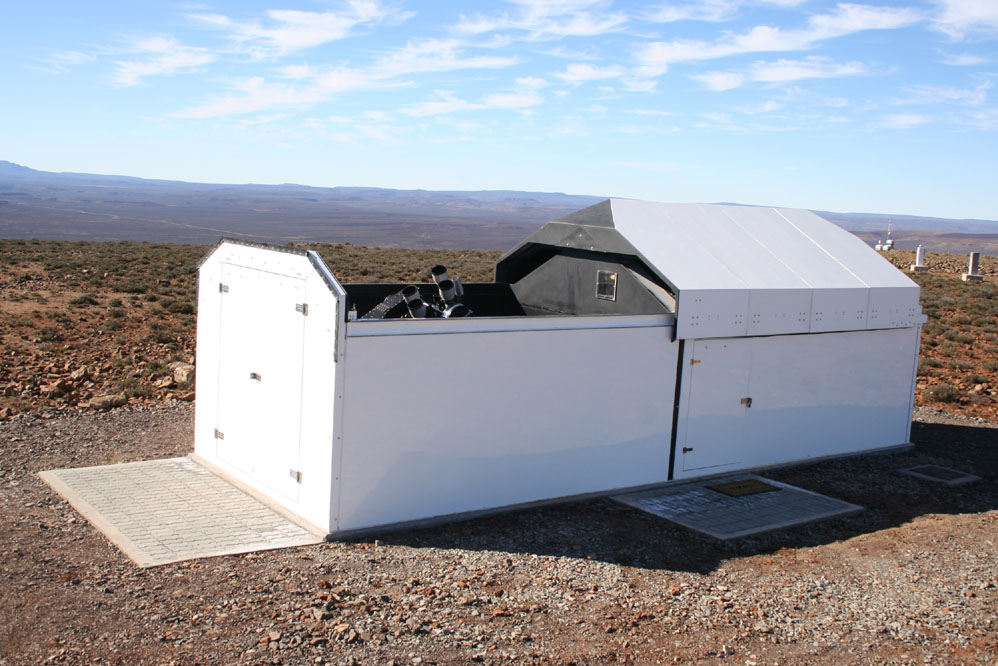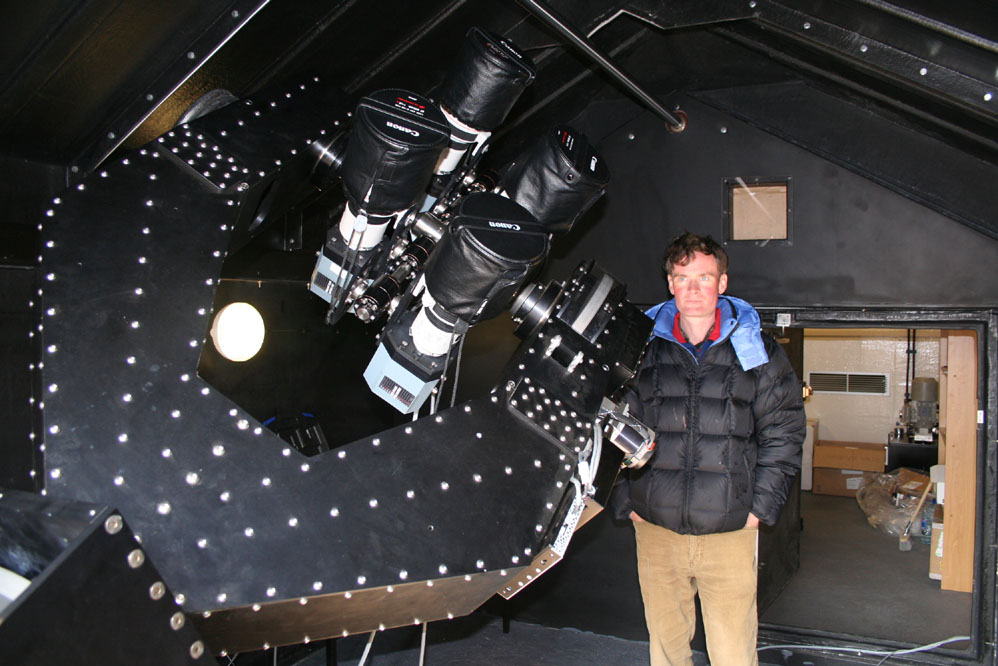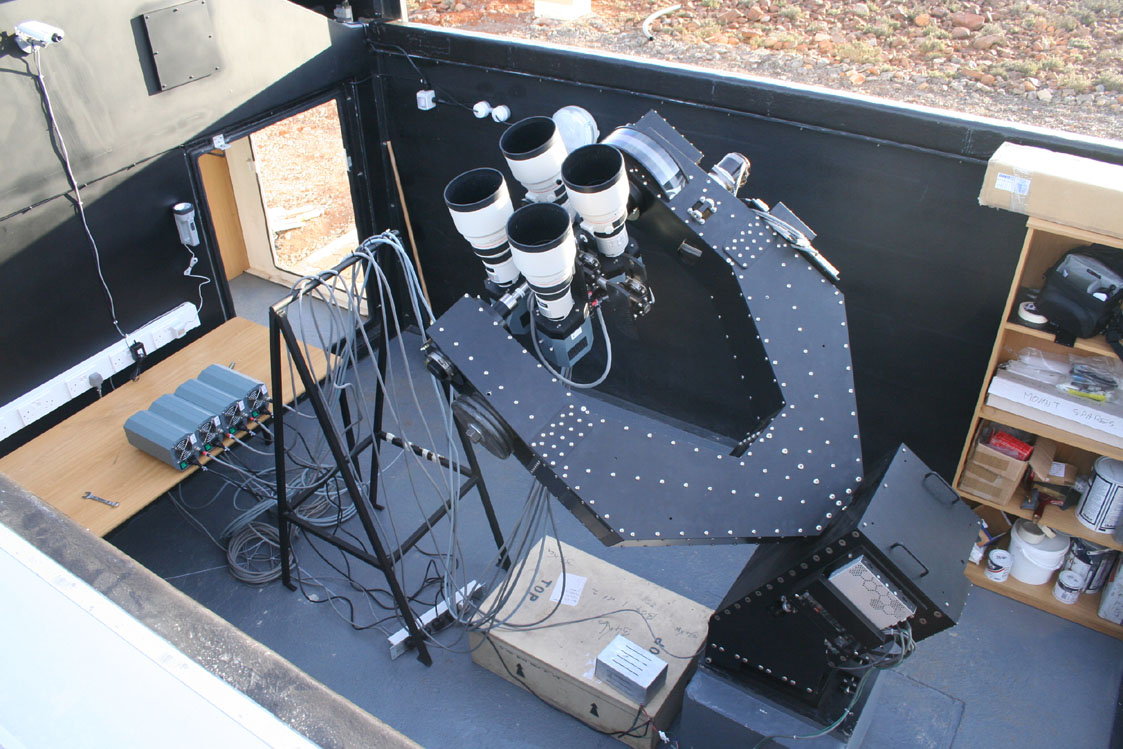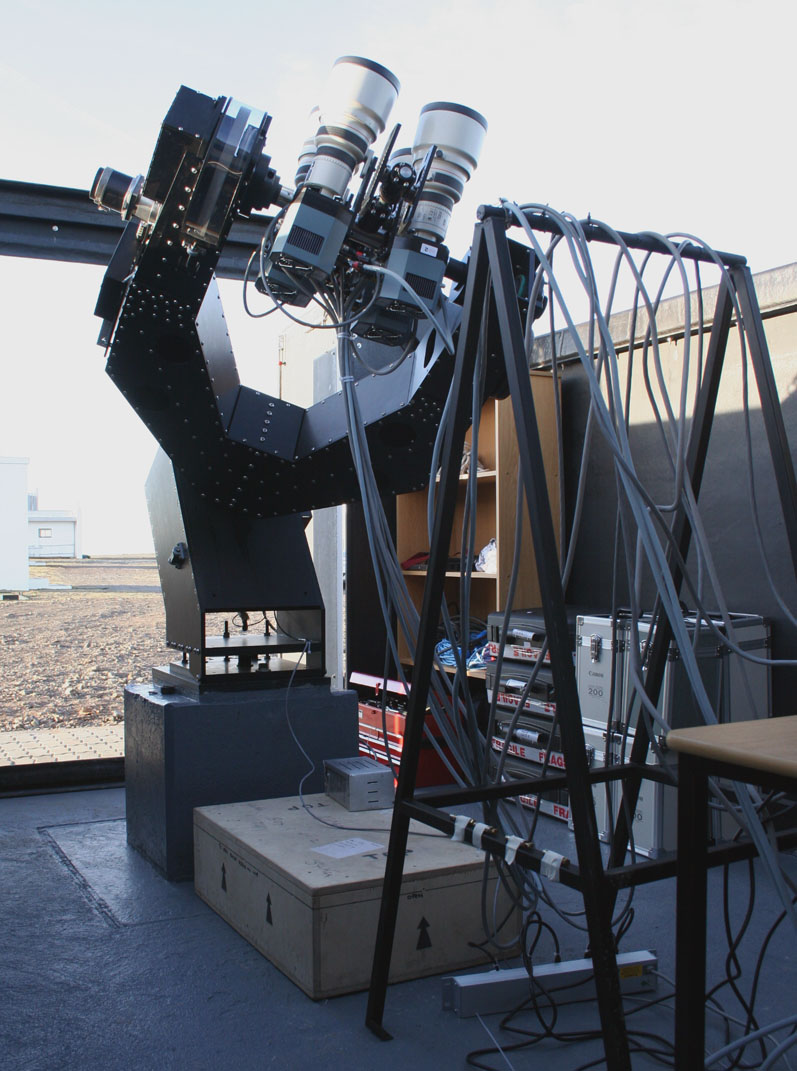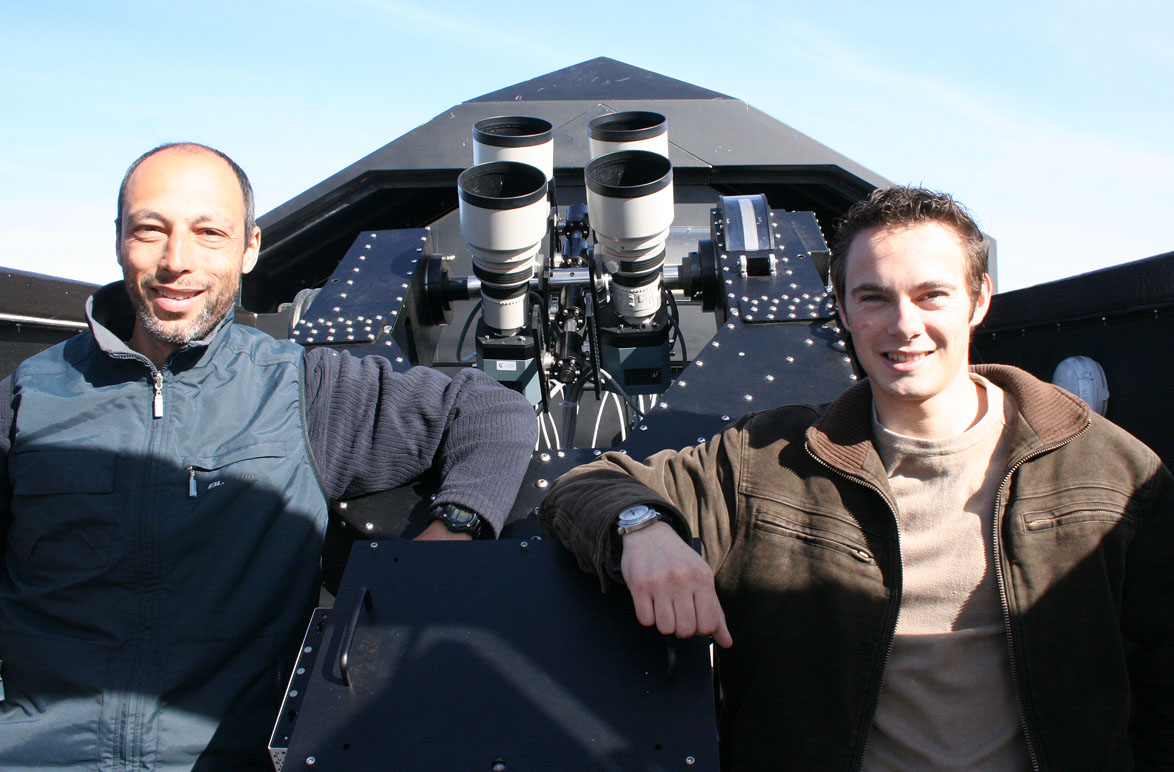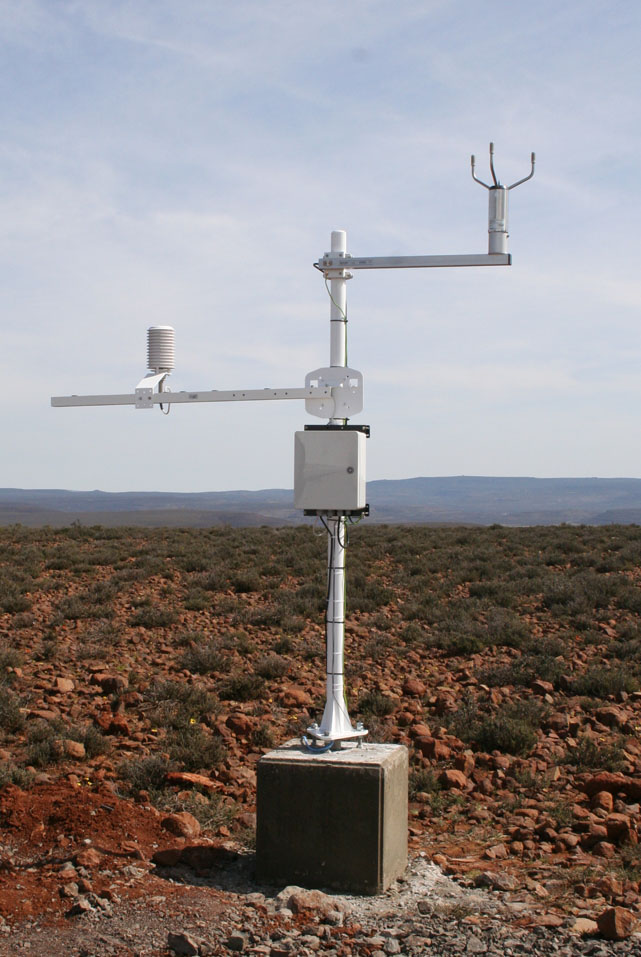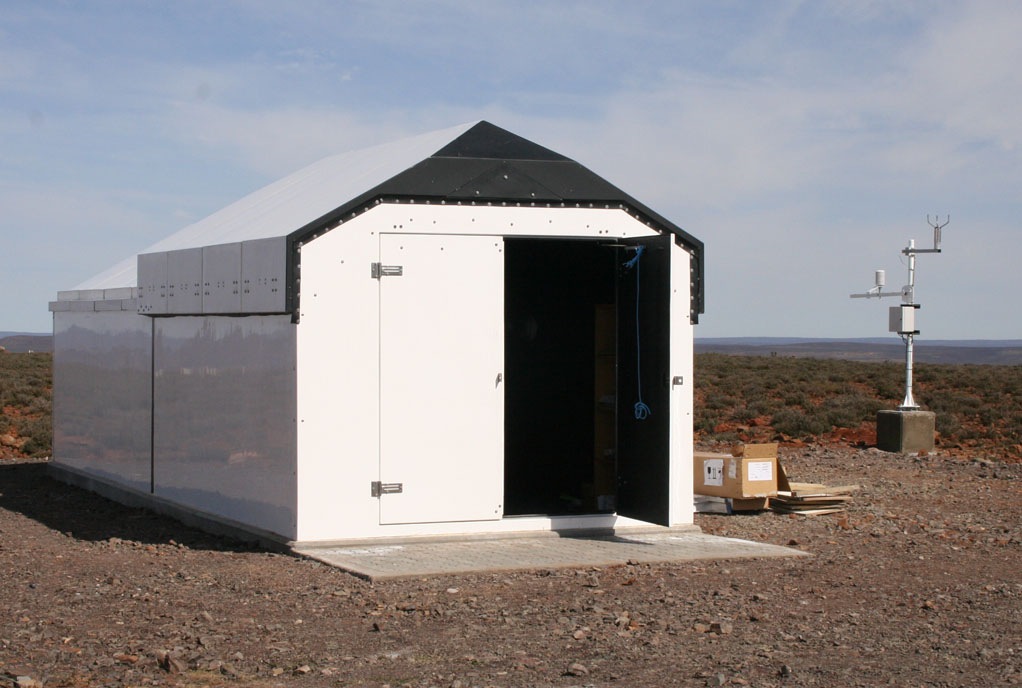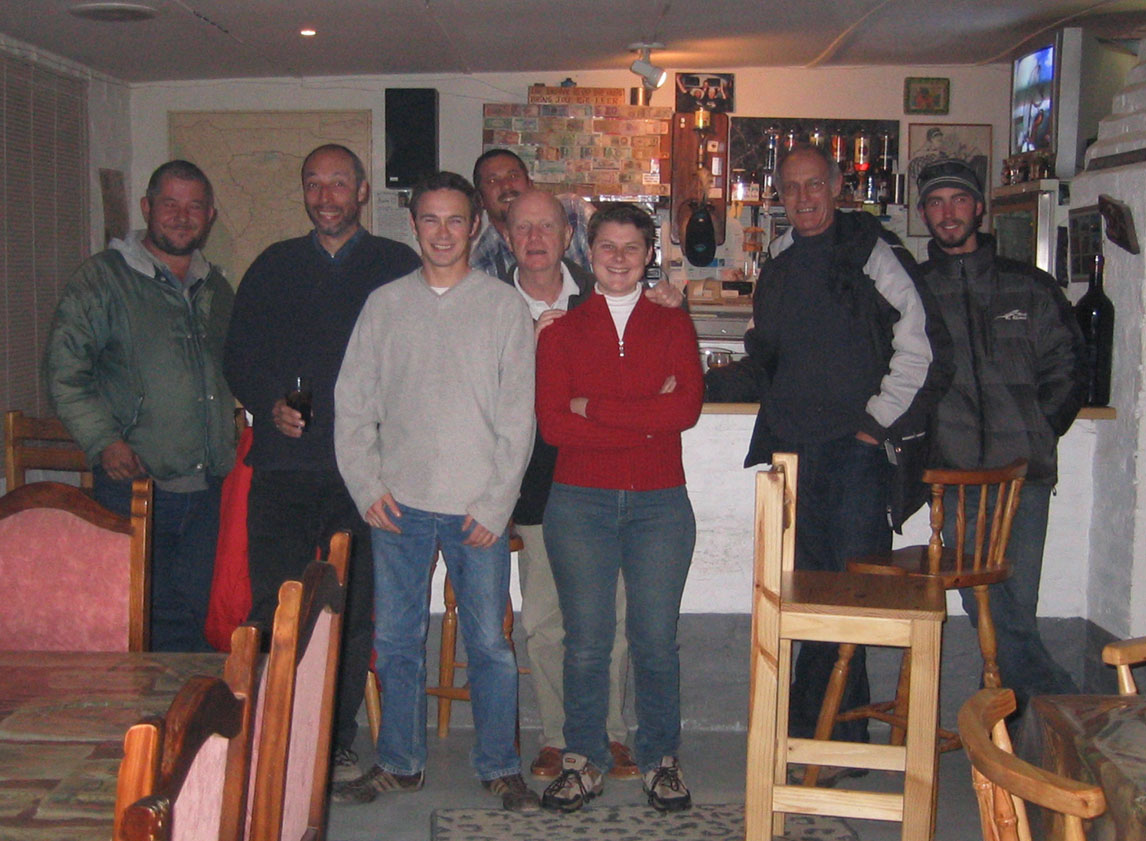About SuperWASP
SuperWASP North Gallery · SuperWASP South Gallery
SuperWASP Locations

SuperWASP North, operated by Queens University, is situated on the island of La Palma in the Canary islands amongst the Isaac Newton Group (ING) of telescopes. SuperWASP-South, operated by Keele University, is situated at the site of the South African Astronomical Observatory (SAAO) near Sutherland in South Africa. (Image courtesy: www.visibleearth.nasa.gov)
How SuperWASP Works
There are an estimated 10 billion planetary systems in our galaxy alone, yet to-date, only a few hundred have been discovered. Exoplanets are very difficult to detect because they don't emit any light of their own and are completely obscured by their extremely bright parent stars. Normal telescope observation techniques cannot be used. Instead of trying to image/detect exoplanets directly we look for the physical effects they have on their parent star such as shifts in position or changes in brightness.
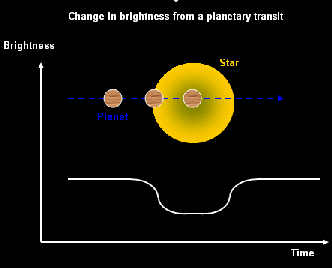 SuperWASP detects planets by looking for 'transits'. These occur when a planet
passes in front of its parent star, temporarily obscuring some of its
light. This can be detected from the Earth as a slight dimming of the
star's luminosity. The dimming can be as little as 1% so extremely
accurate measurements are needed.
The image to the left is
a transit diagram demonstrating the process. As the planet passes in
front of the star it produces a characteristic 'light-curve' whose
shape is affected by the size and orbital distance (and hence orbital
period) of the planet. SuperWASP constantly monitors the brightness of
the stars in its field of view and alerts us of any variations that may
be due to the presence of a planet.
SuperWASP detects planets by looking for 'transits'. These occur when a planet
passes in front of its parent star, temporarily obscuring some of its
light. This can be detected from the Earth as a slight dimming of the
star's luminosity. The dimming can be as little as 1% so extremely
accurate measurements are needed.
The image to the left is
a transit diagram demonstrating the process. As the planet passes in
front of the star it produces a characteristic 'light-curve' whose
shape is affected by the size and orbital distance (and hence orbital
period) of the planet. SuperWASP constantly monitors the brightness of
the stars in its field of view and alerts us of any variations that may
be due to the presence of a planet.
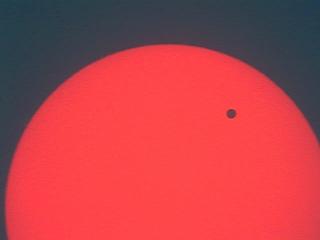
The easiest planets to detect are close orbiting gas giants known as 'Hot Jupiters'. These are very large planets (about 10 times the size of the Earth) which orbit extremely closely to their parent star (far closer than Mercury orbits our Sun). Their size and proximity creates a large decrease in brightness which is easy to detect. Their close orbital proximity produces very short orbital periods, sometimes as short as a few days, which enables the whole transit to be observed from only a few observations. The image to the right shows the transit of Venus in front of our own sun which occurred in June 2004 (image courtesy of Keele University Observatory). Venus is such a small planet that its transit hardly blocks any light and so would be very difficult to detect if it were orbiting around another nearby star.
The SuperWASP observatories each consist of an array of 8 cameras, backed with a high-quality CCD. These cameras are extremely wide field - upto 2000 times greater than a conventional astronomical telescope. The cameras continuously image the night sky, each camera capturing up to 100,000 stars per image (this many are needed to stand any chance of detecting transiting planets). This amounts to over 50 gigabytes of observational data per night, per observatory, which is automatically processed by our custom built computer 'Pipeline'.
The 'Pipeline' first reduces the images by removing errors such as variations in pixel sensitivity, dirt/scratches on the lenses, noise etc. This is done by comparing the images to special calibration images. The diagram below shows three of these images;
- 'Flat-field' - an image (or several images) of a uniform area of the sky taken at twilight, used to remove variations in pixel sensitivity across the CCD, dust and scratches and variations in illumination across the lens known as vignetting.
- 'Bias' - a short exposure image with the lens shutter in place, used to estimate the effect of a voltage difference applied to the CCD to ensure a linear response.
- 'Dark-current' - a longer exposure with the lens shutter in place, used to eliminate thermal noise from the CCD (although the CCDs are cooled to -50C thermal noise is still present).
The 'pipeline' then examines the images and matches each star with an astronomical catalogue of stars to identify them. Finally a complex photometric analysis is performed to measure the brightness of every star, the results of which are stored in the project database hosted by the University of Warwick.
When sufficient observations have been made (over several months), we perform searches for dips in brightness that might indicate the presence of a planet passing in front of a star. Unfortunately there are a large number of phenomenon, other than planets, that can cause changes in stellar brightness. Very careful analysis is needed to verify the presence of a planet which is performed with the help of our collaborators from the Geneva Planet Search group. To confirm the presence of the planet they use sensitive spectrographs to measure the minute shift in position of the star as the planet orbits around.
Once confirmed, astronomers can then use large instruments such as the Hubble and Spitzer space telescopes to study these worlds.
SuperWASP North Gallery
SuperWASP South Gallery
SuperWASP South, operated by Keele University, is situated at the site of the South African Astronomical Observatory (SAAO) near Sutherland in South Africa.
Acknowledgements
The SuperWASP project is currently funded and operated by Warwick University and Keele University, and was originally set up by Queen’s University Belfast, the Universities of Keele, St. Andrews and Leicester, the Open University, the Isaac Newton Group, the Instituto de Astrofisica de Canarias, the South African Astronomical Observatory and by STFC.
The Zooniverse project on SuperWASP Variable Stars is led by Andrew Norton (The Open University) and builds on work he has done with his former postgraduate students Les Thomas, Stan Payne, Marcus Lohr, Paul Greer, and Heidi Thiemann, and current postgraduate student Adam McMaster.
The Zooniverse project on SuperWASP Variable Stars was developed with the help of the ASTERICS Horizon2020 project. ASTERICS is supported by the European Commission Framework Programme Horizon 2020 Research and Innovation action under grant agreement n.653477
VeSPA was designed and developed by Adam McMaster as part of his postgraduate work. This work is funded by STFC, DISCnet, and the Open University Space SRA. Server infrastructure was funded by the Open University Space SRA.
